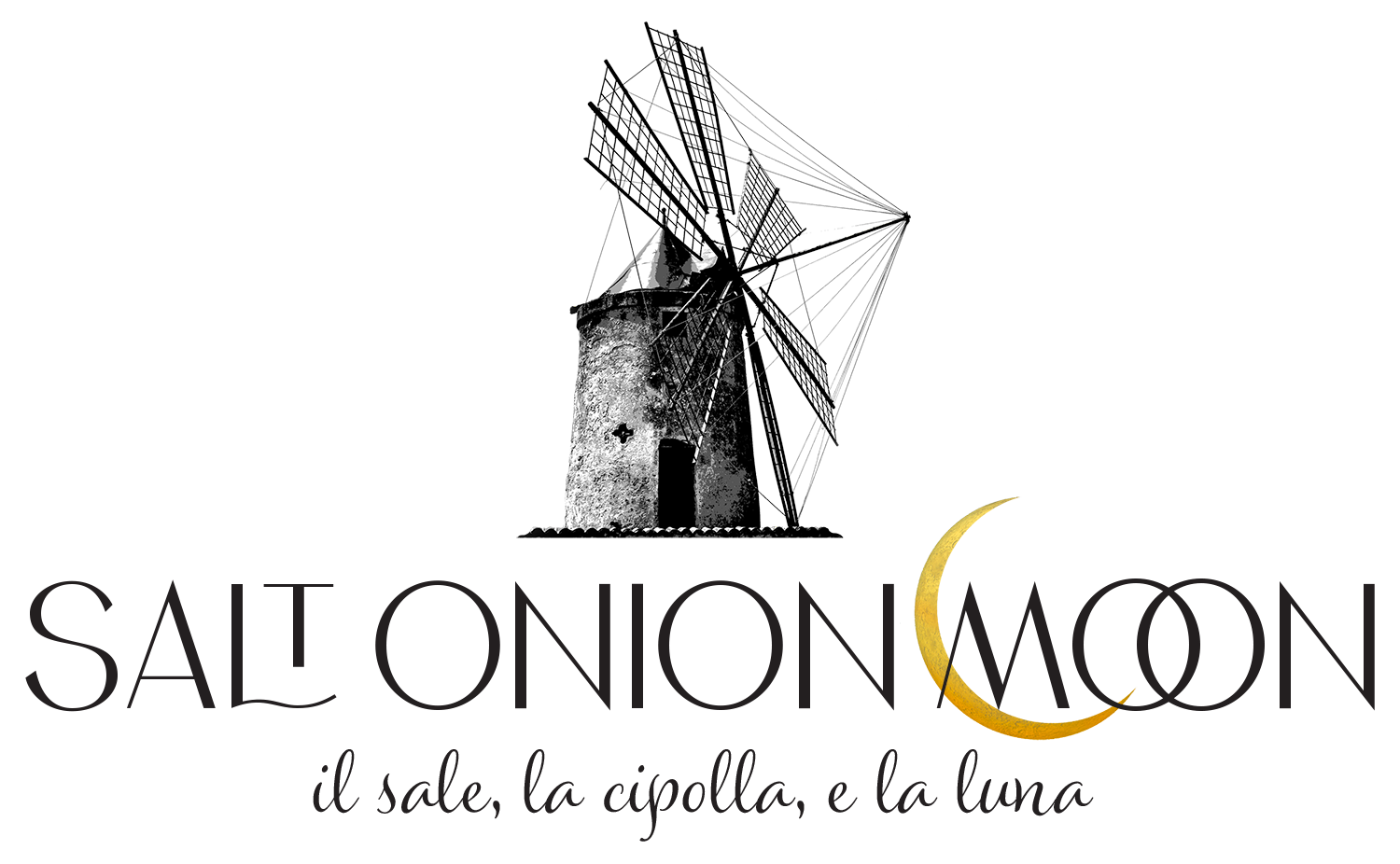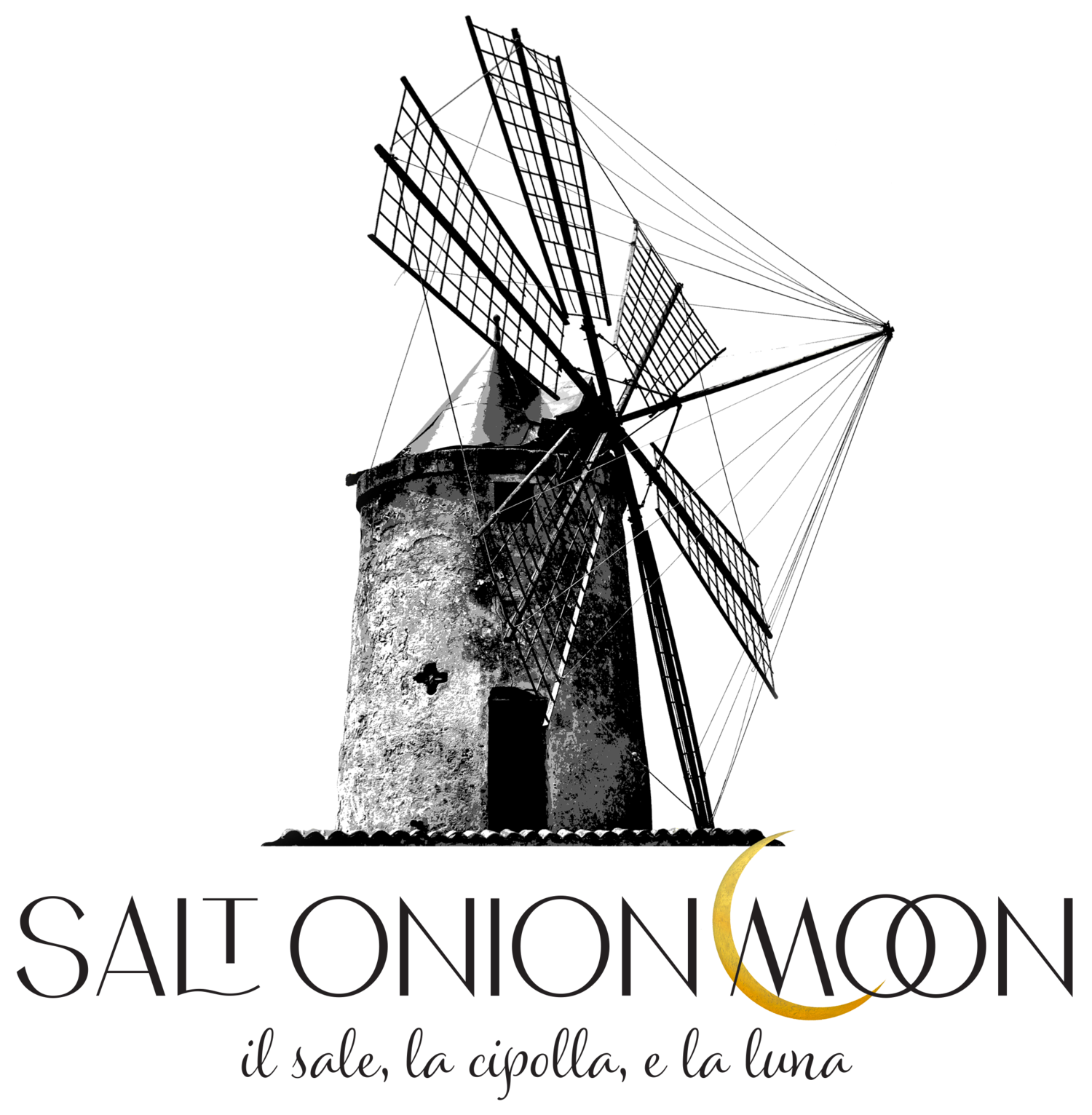Aglio e Puccini
Our friend, the inimitable garlic clove!
The famous statue of maestro Puccini right by the Casa Natale Puccini Museum- Lucca
While garlic may play “il maestro” to many great Italian meals, it is not to be confused with Il Gran Maestro, Signor Giacomo Puccini who we will also visit in this post. Puccini was an avid cook and eater of his native Tuscan food. I have a sweet, little cookbook with some of his favorite recipes called Buon Appetito, Maestro. Some recipes he created himself and some were popular at the time.
Ahhh… but that’s another post! We’re talking garlic!
What should you look for?
I love to use garlic that is pristine. A tightly closed, clean head with not huge but large cloves is exactly what you want. Skip the tiny, stolen from the ground too early, garlic with a million little cloves. It is not ready nor is it any fun to peel. The purple stuff is also hard to peel. I just skip it unless I’m desperate.
To avoid all the peeling hassles, when you’re at the store, pick up the tightest, cleanest, driest one you can find and give it a squeeze. If it is firm, then you’ve got a good one. There will be times that you do all of this and when you get the little guy home and open him up you find find to your dismay that there are many tiny cloves inside. It’s definitely a “fist shaking in the air” moment for me. What can I say? Garlic is fickle.
Photos of my last pilgrimage to visit Sg. G. Puccini in his hometown of Lucca in all its marvelous, “garlicky Tuscan goodness”
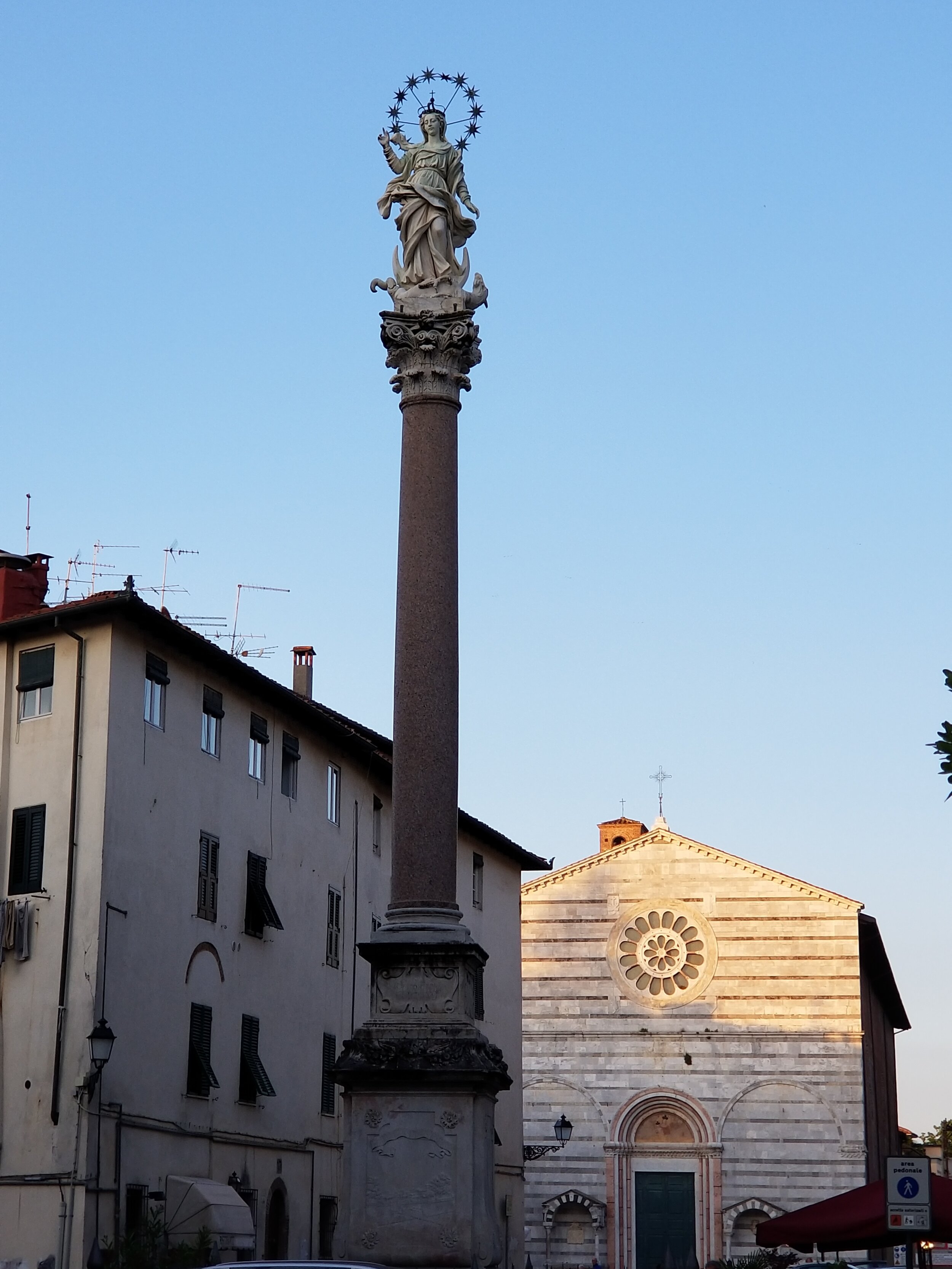
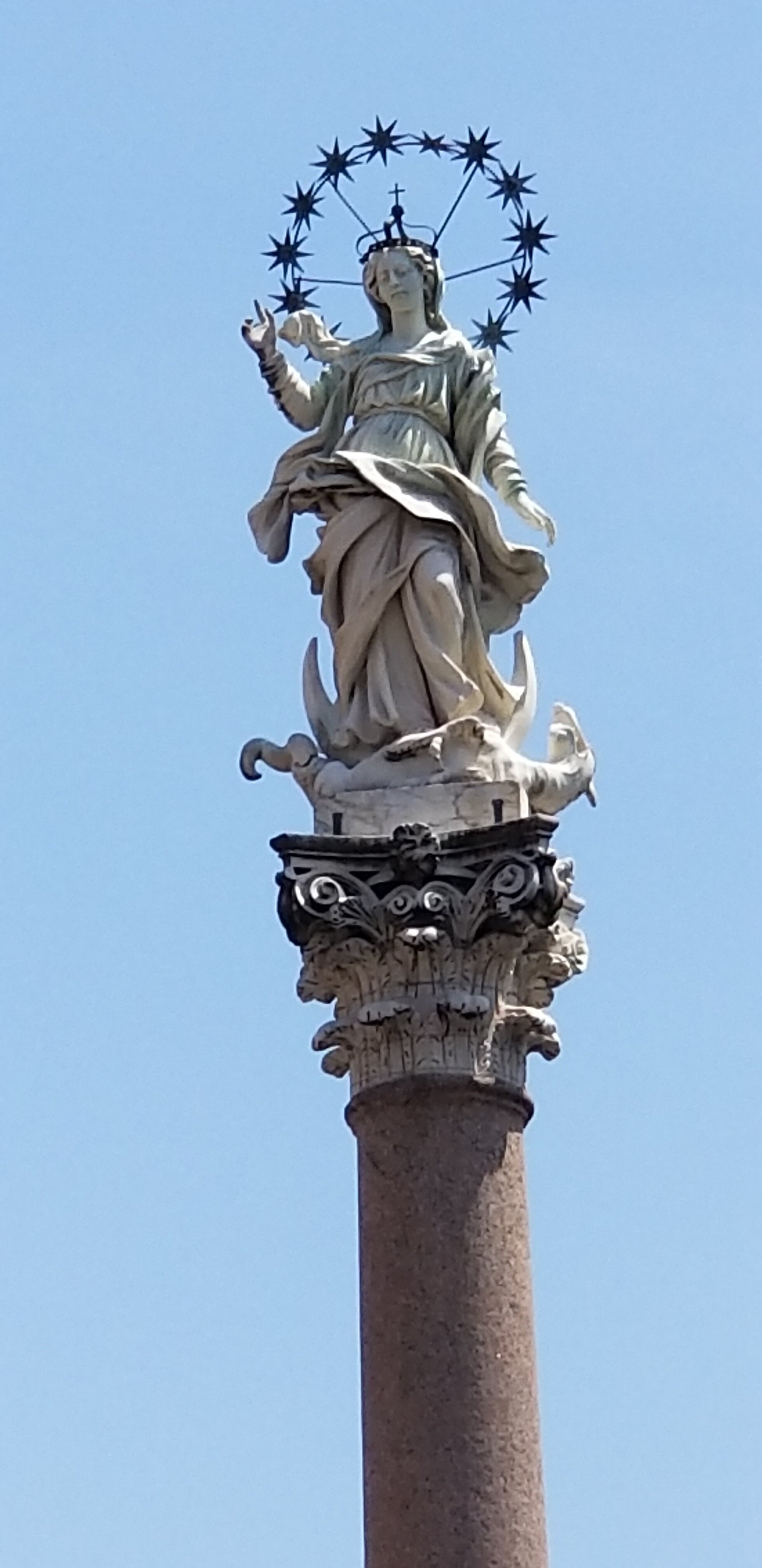

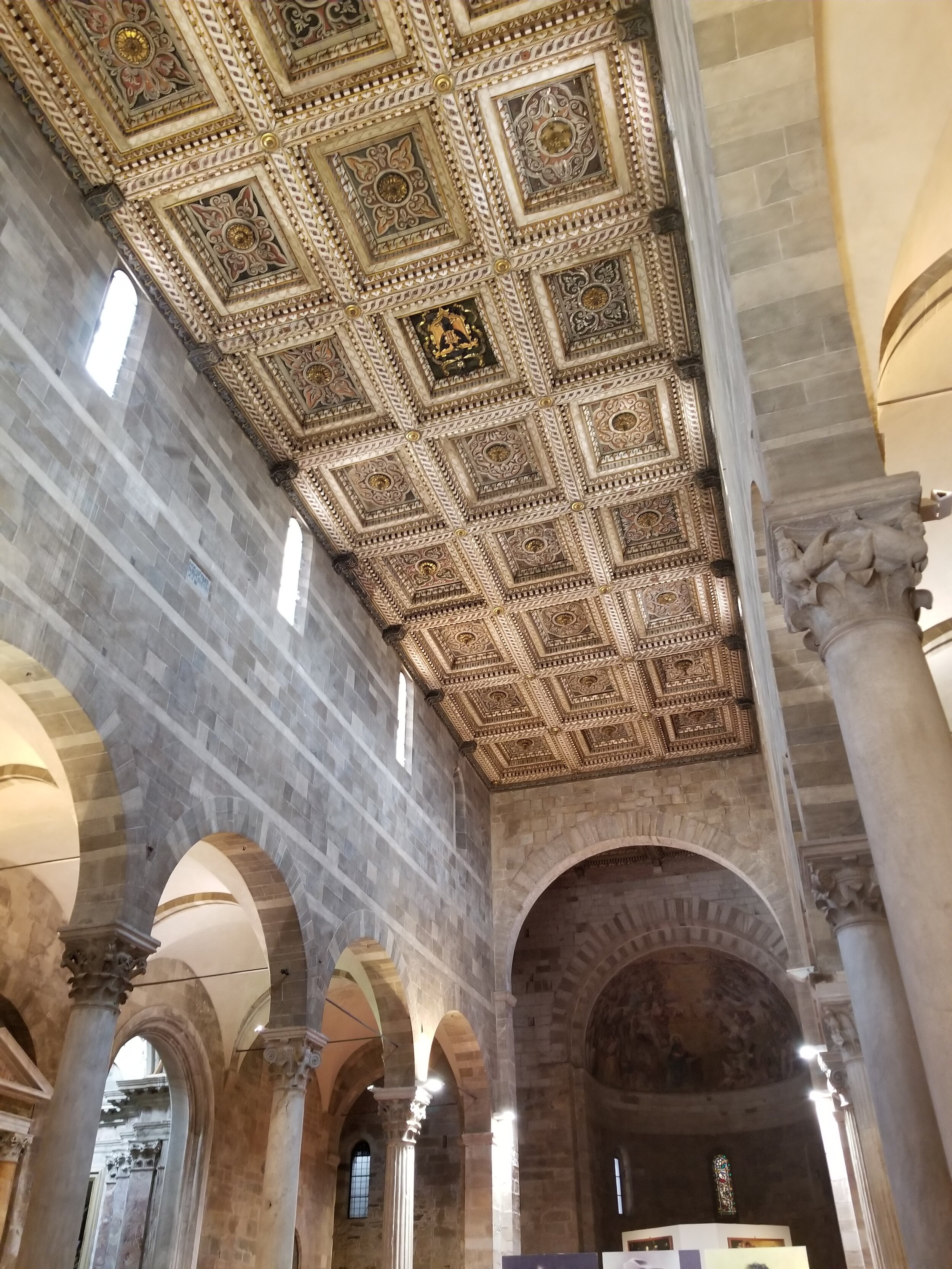
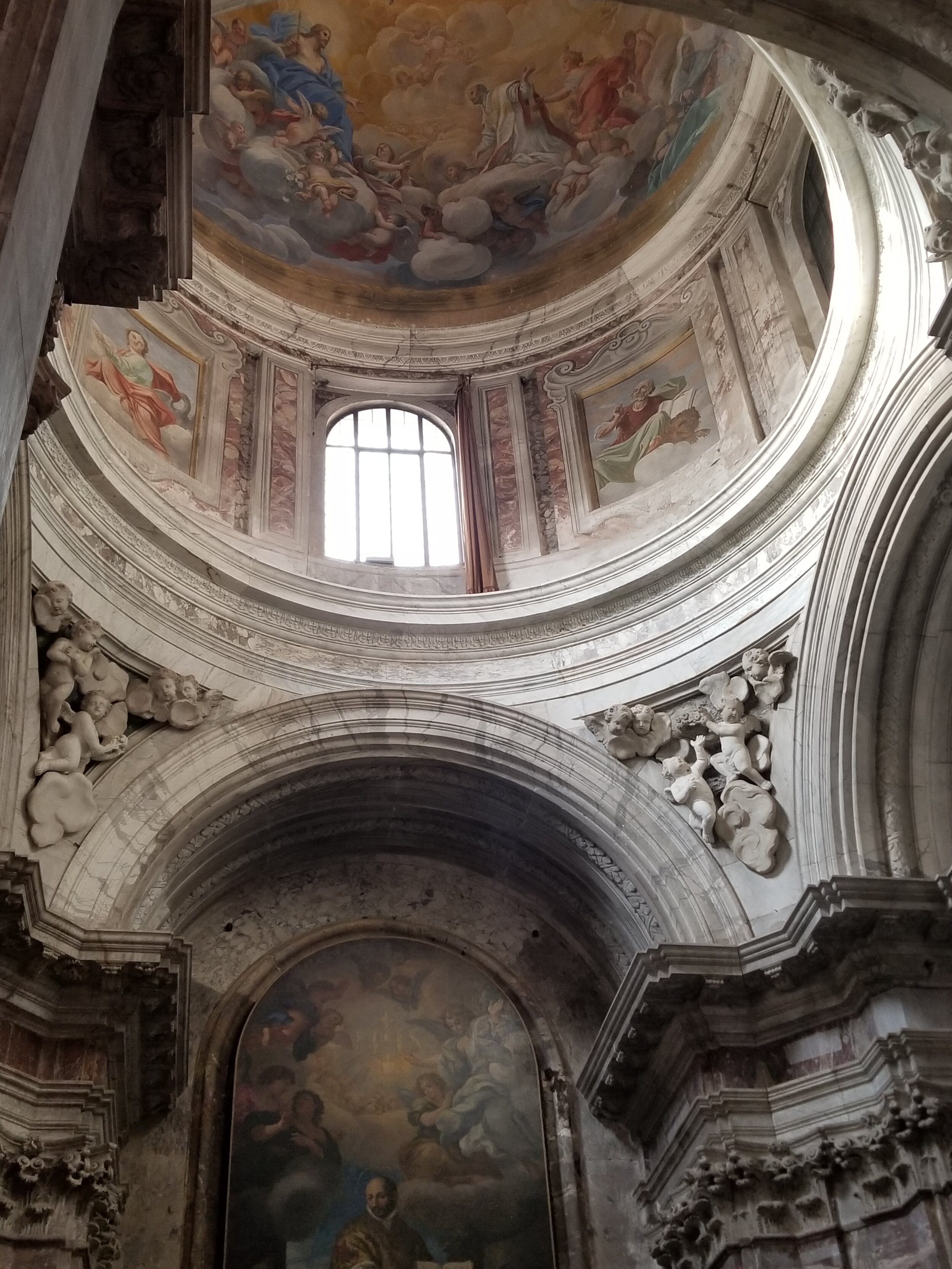

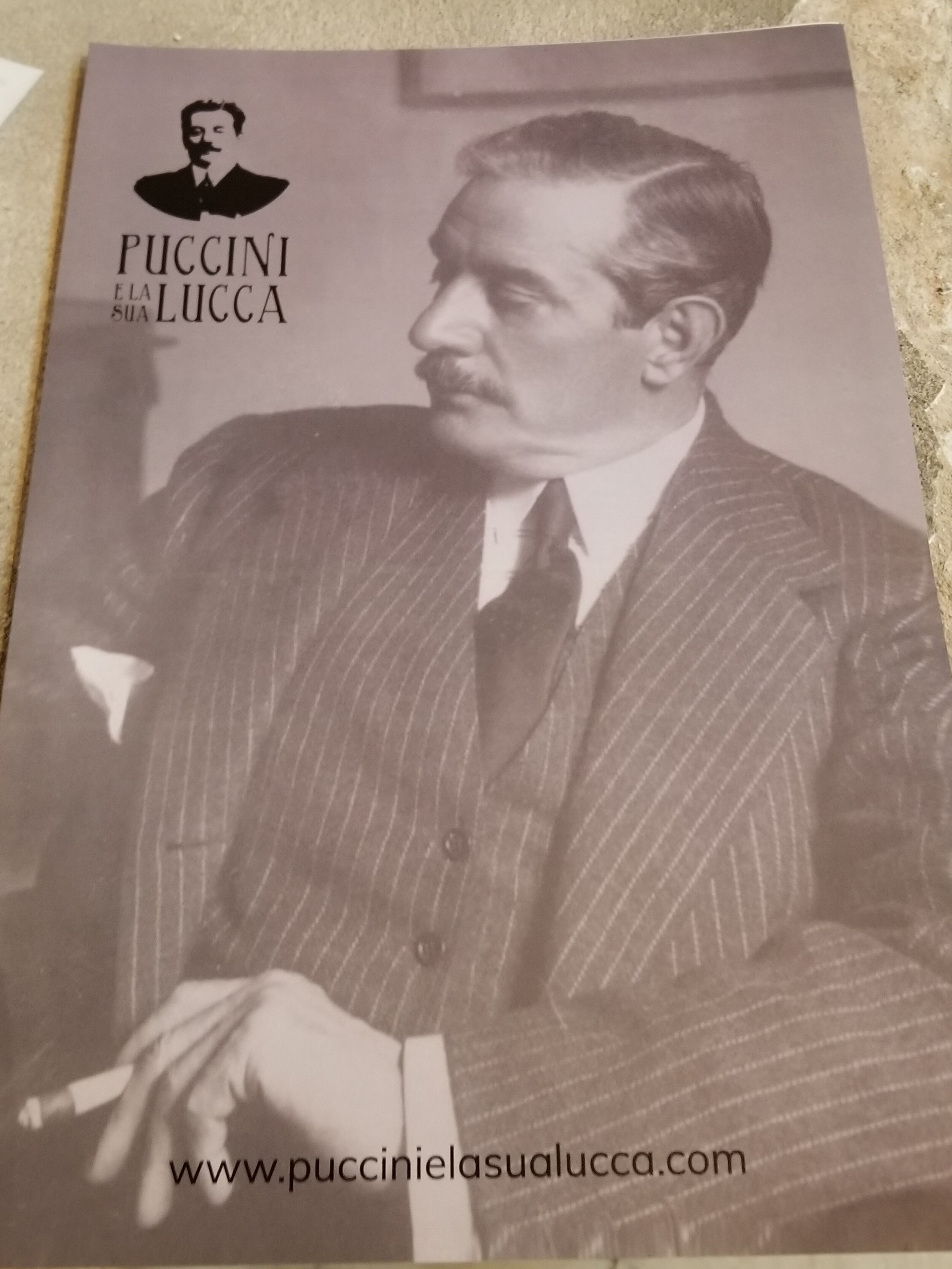
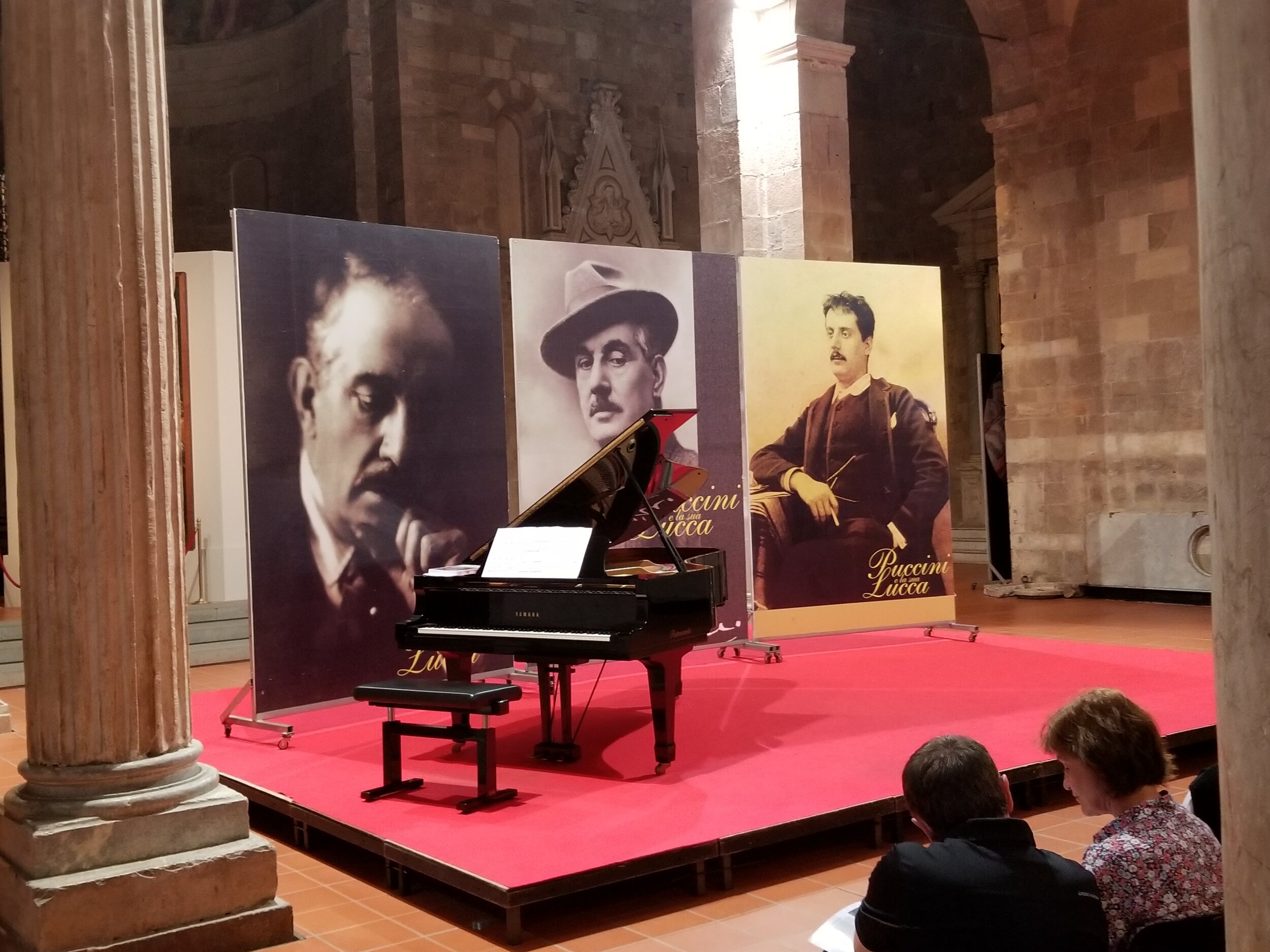
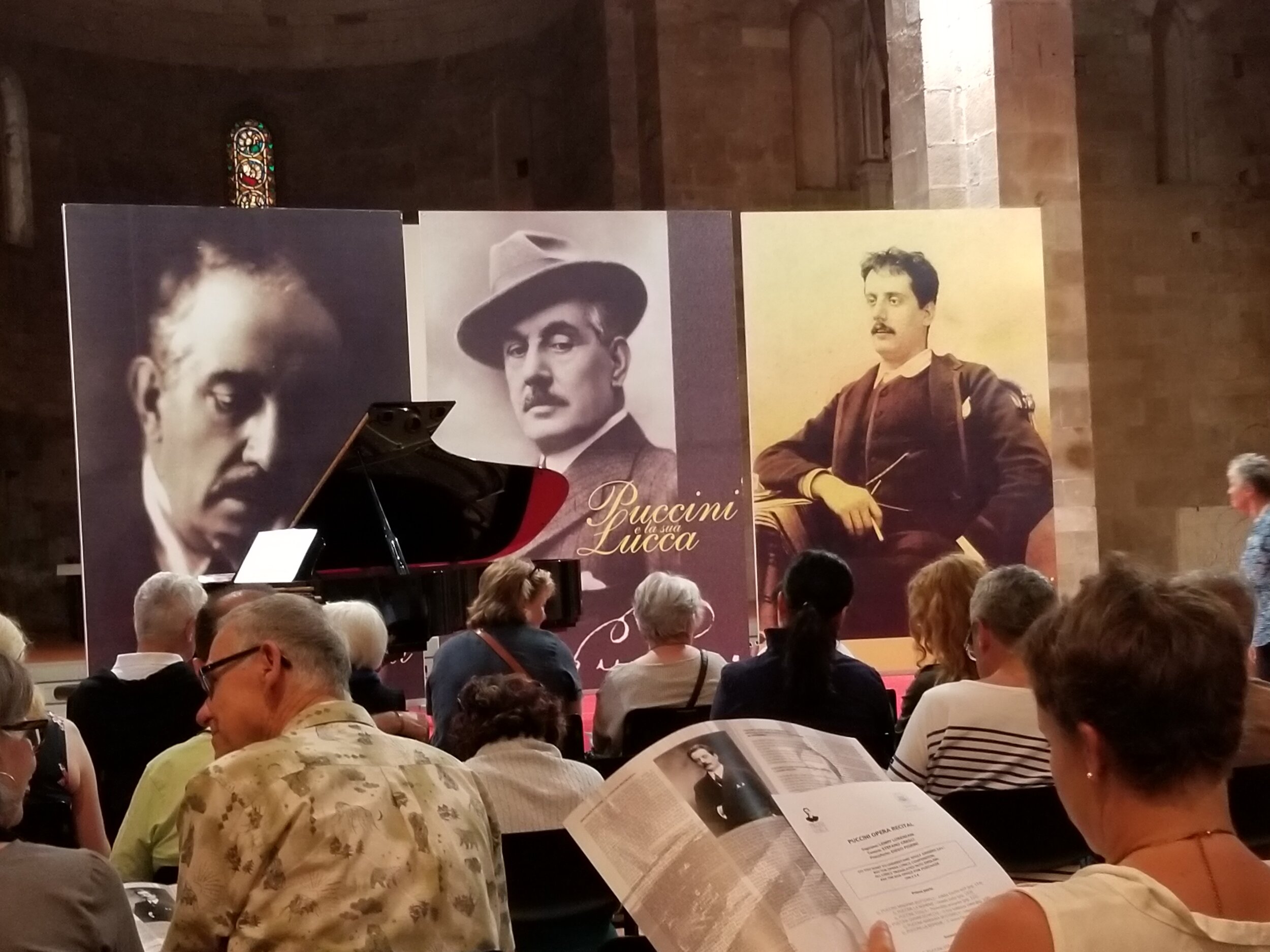
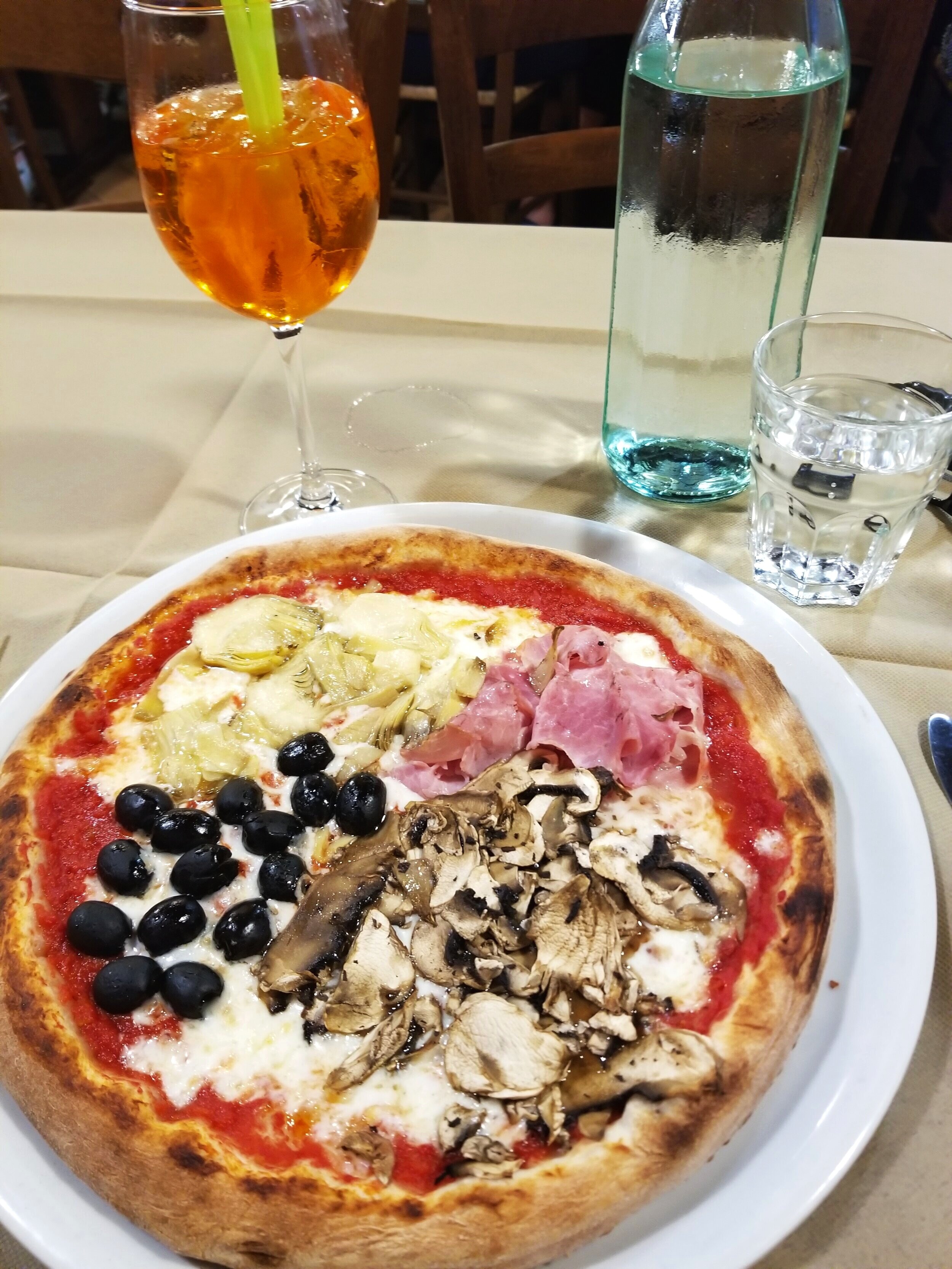

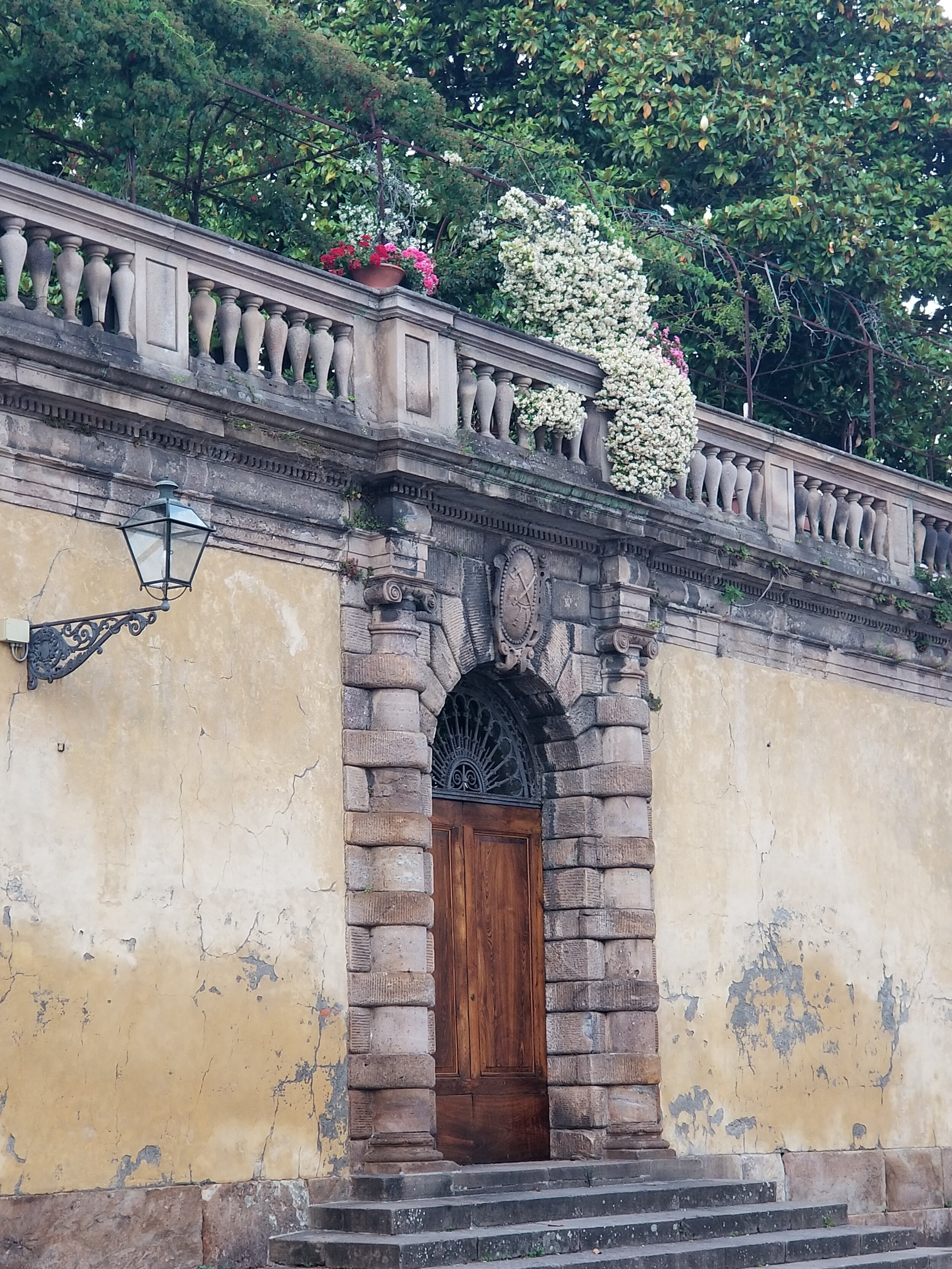
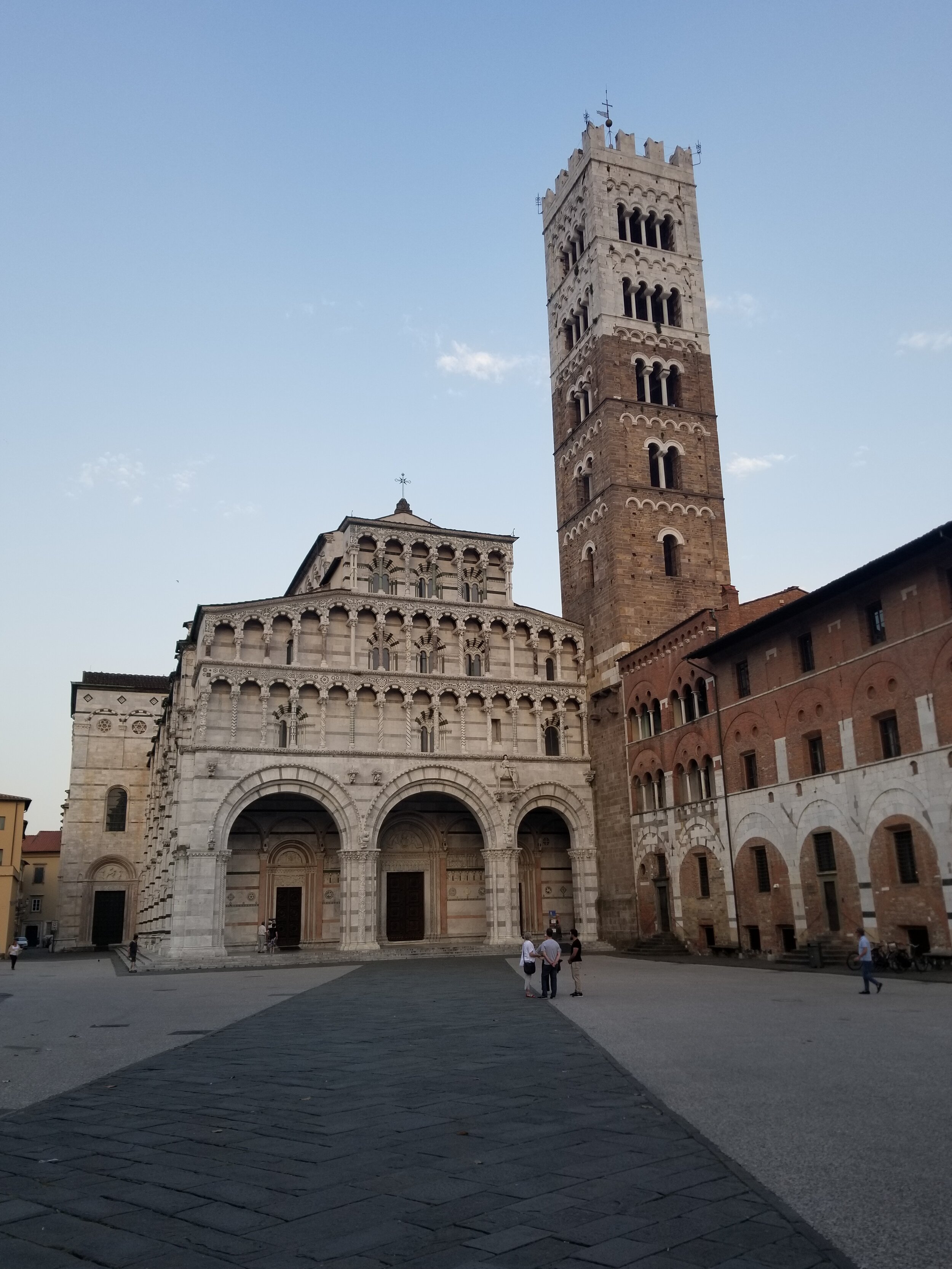
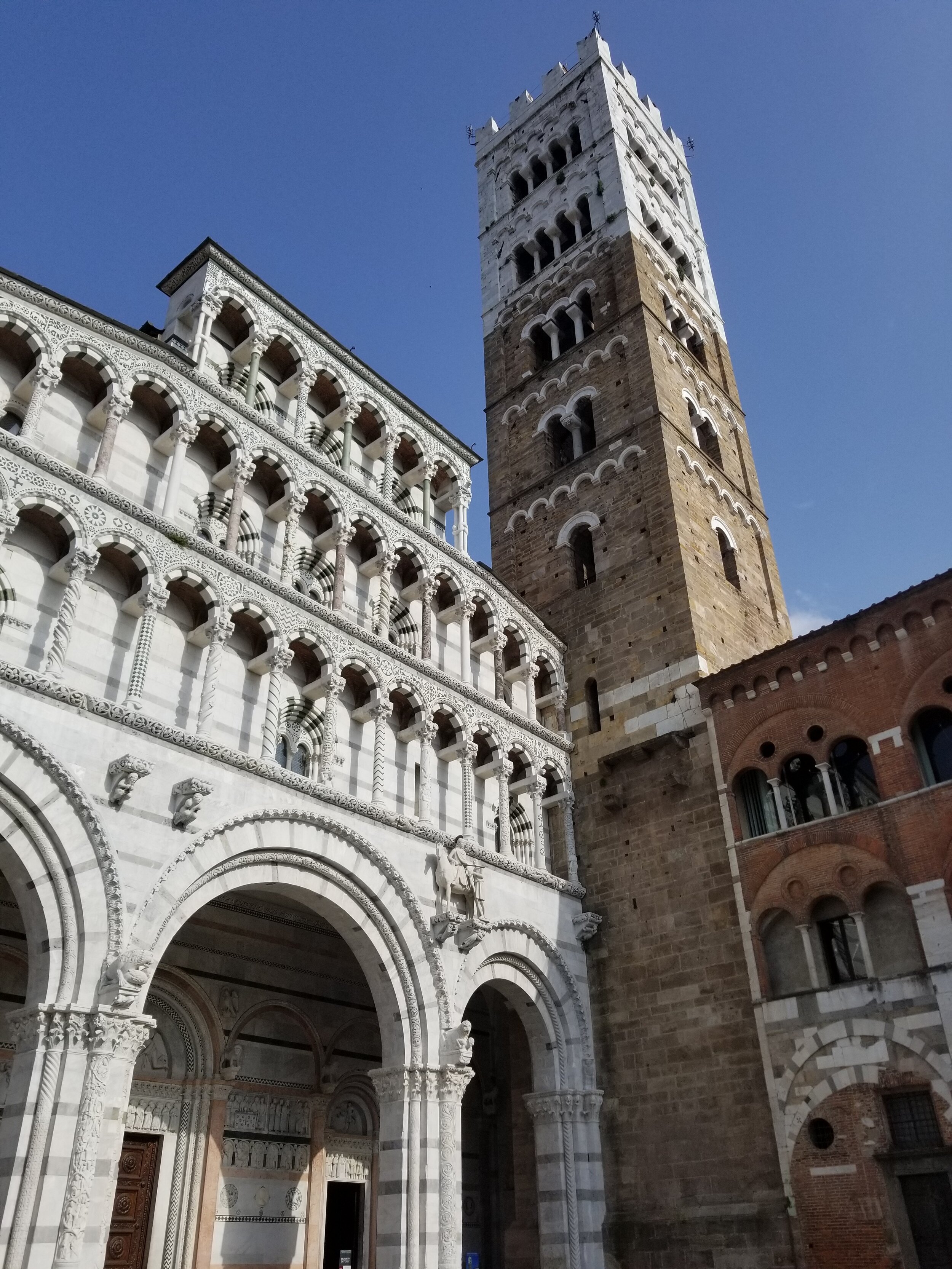
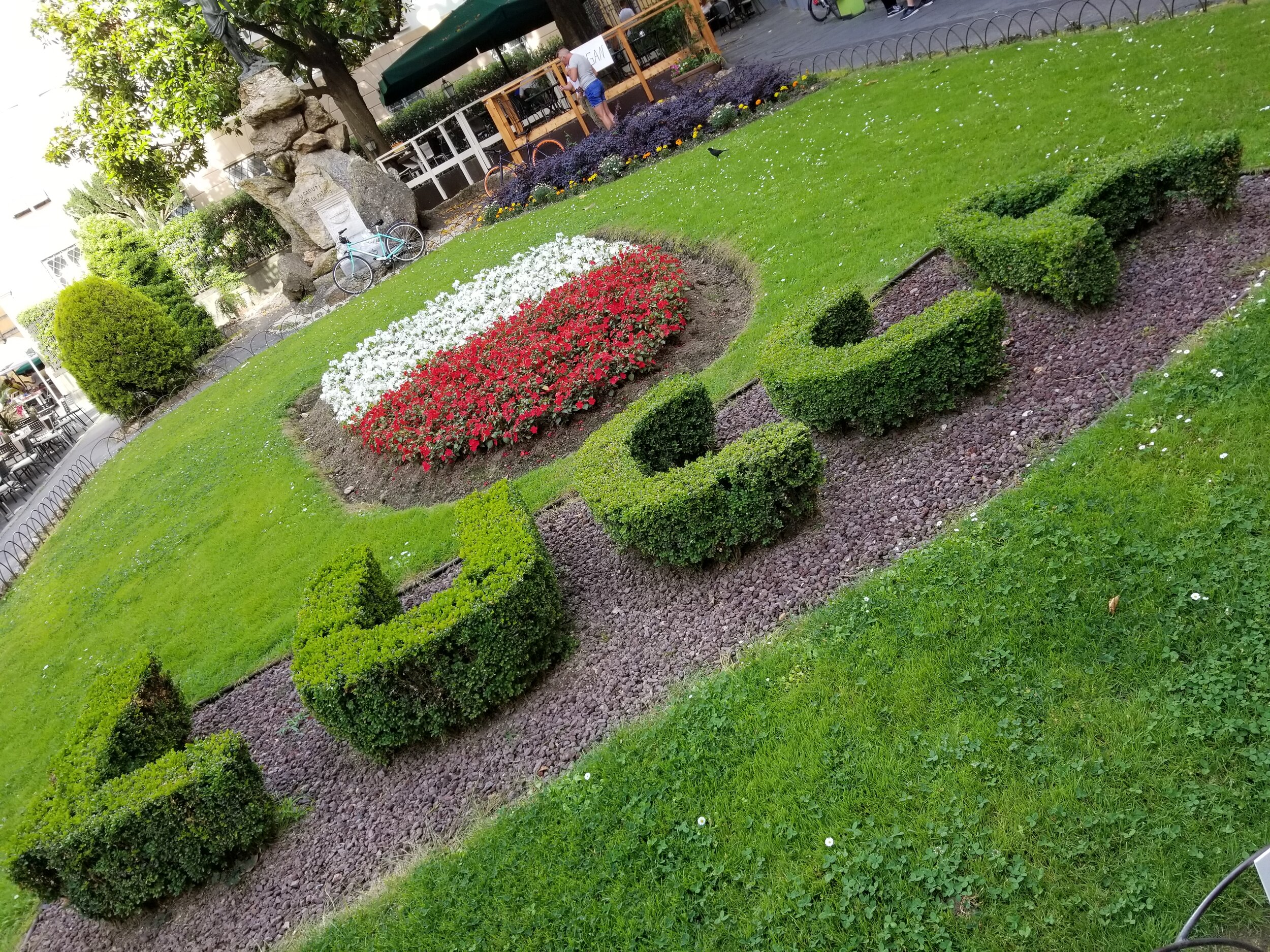
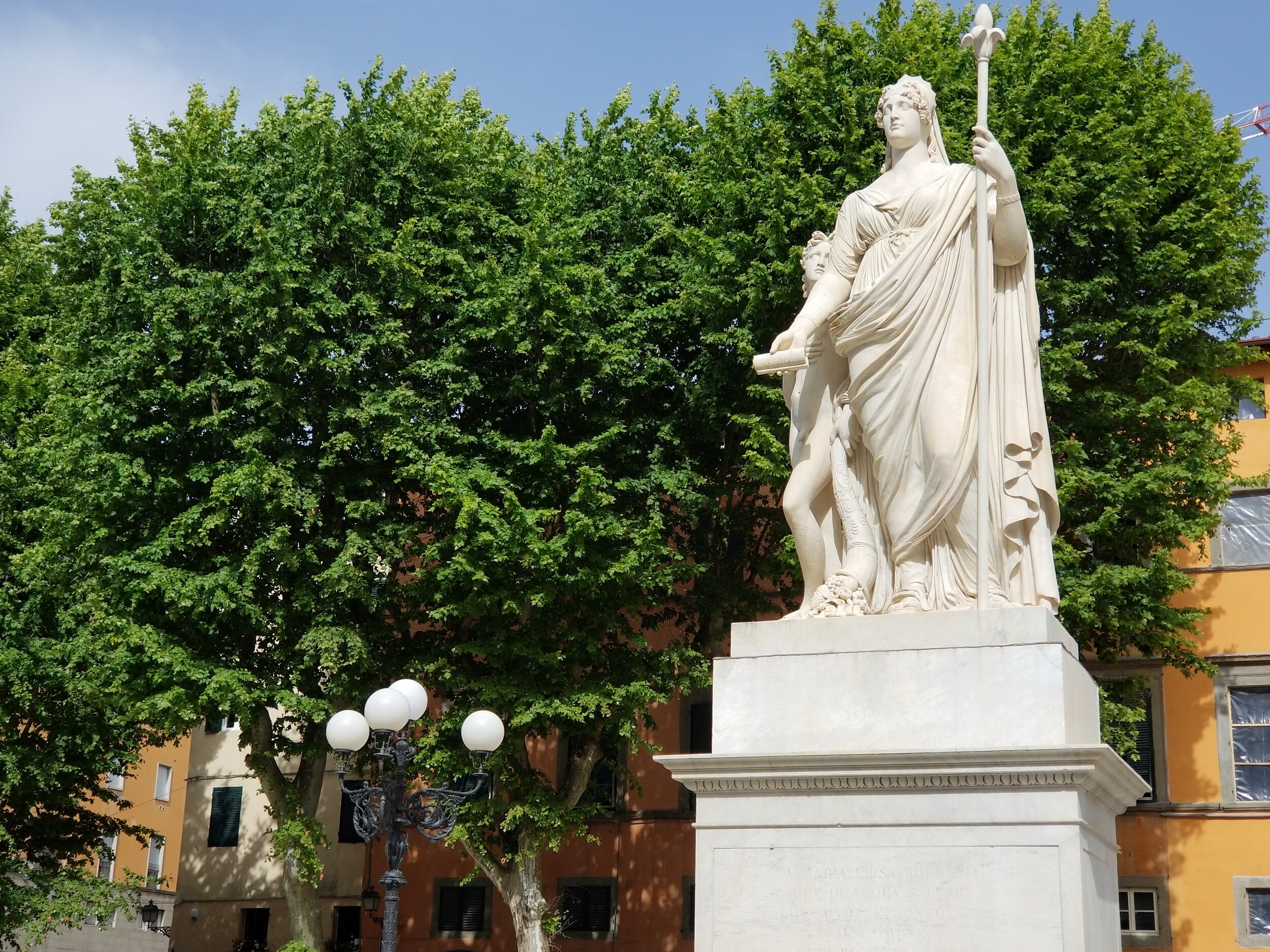
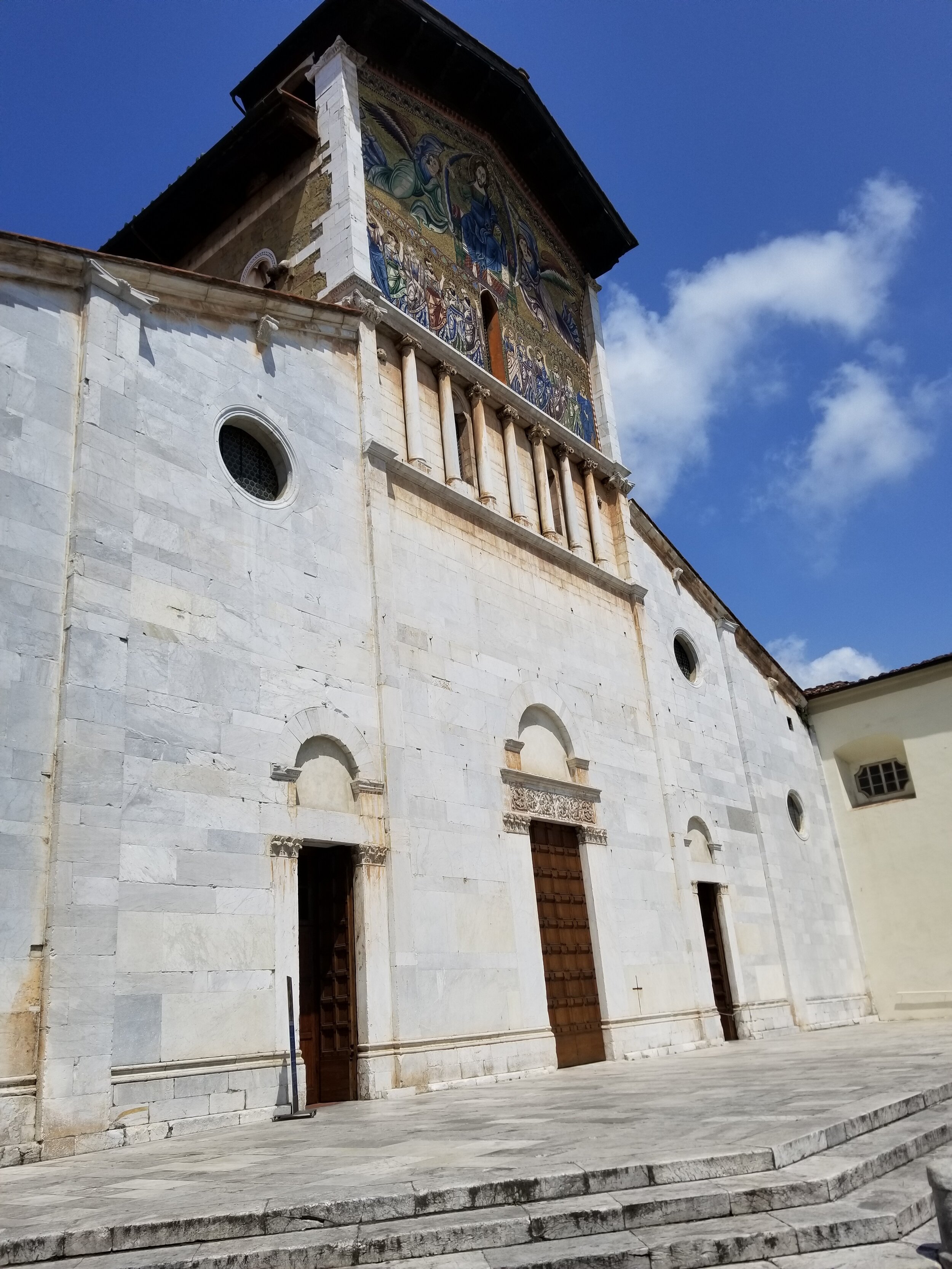
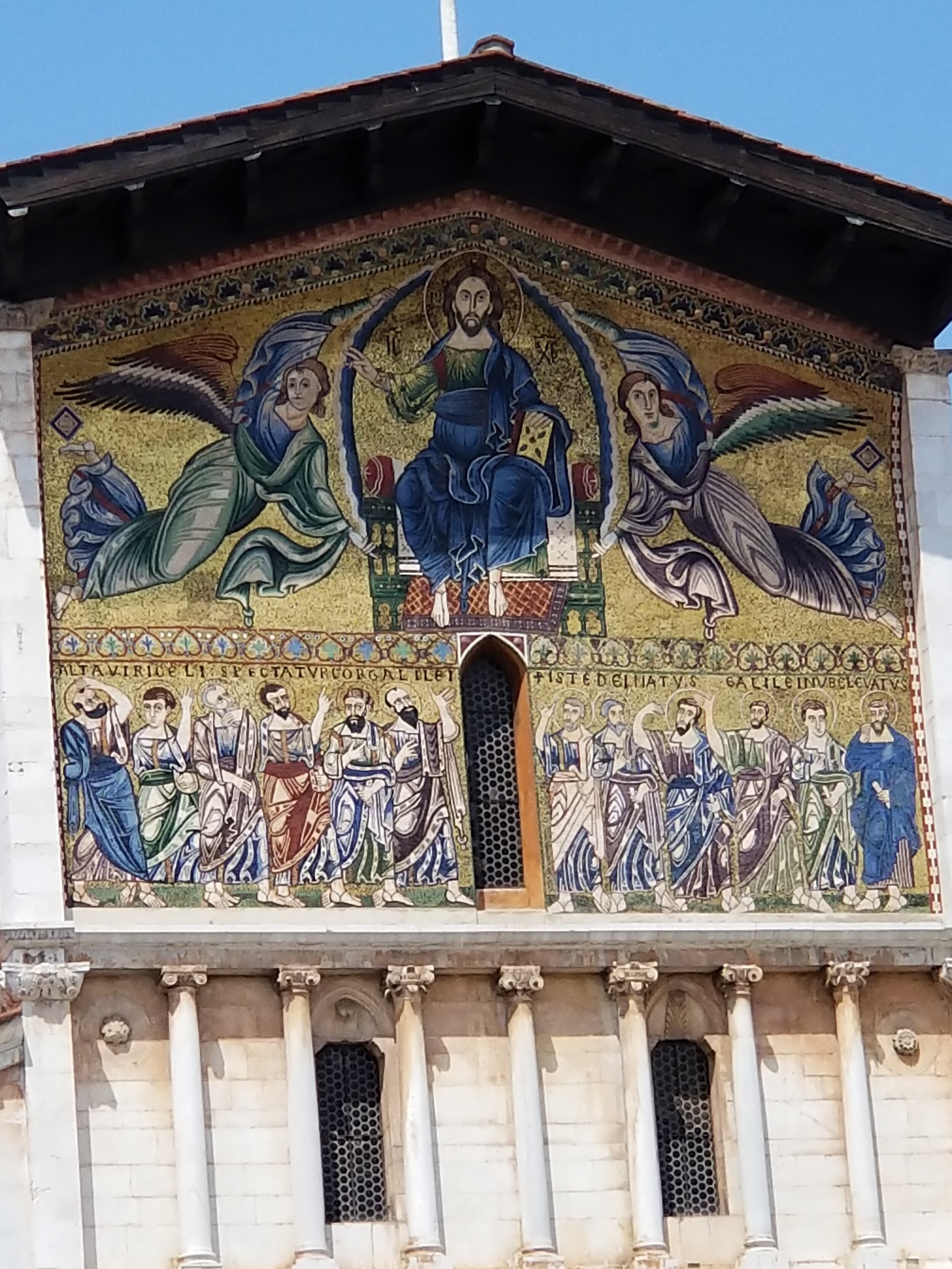

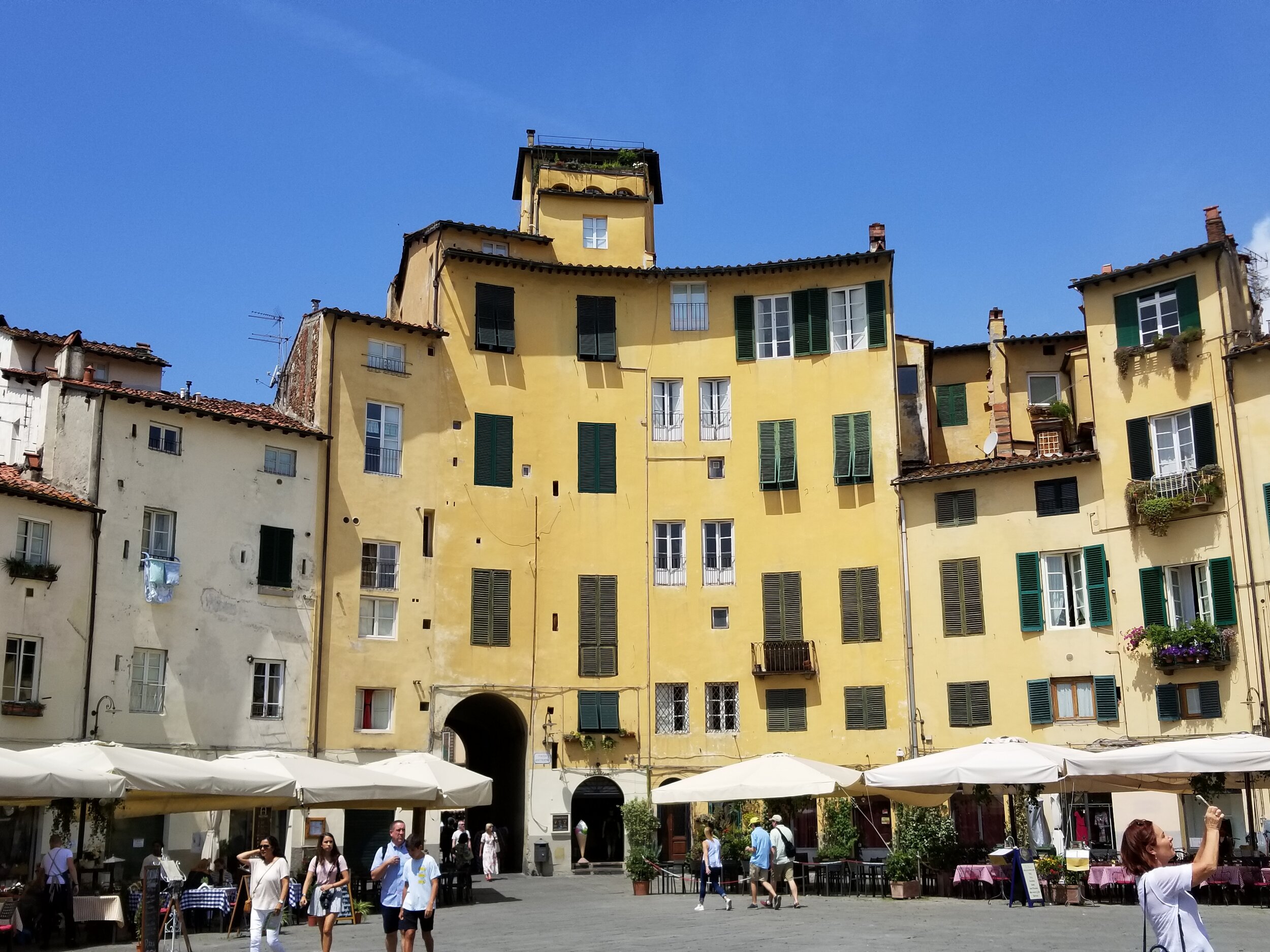

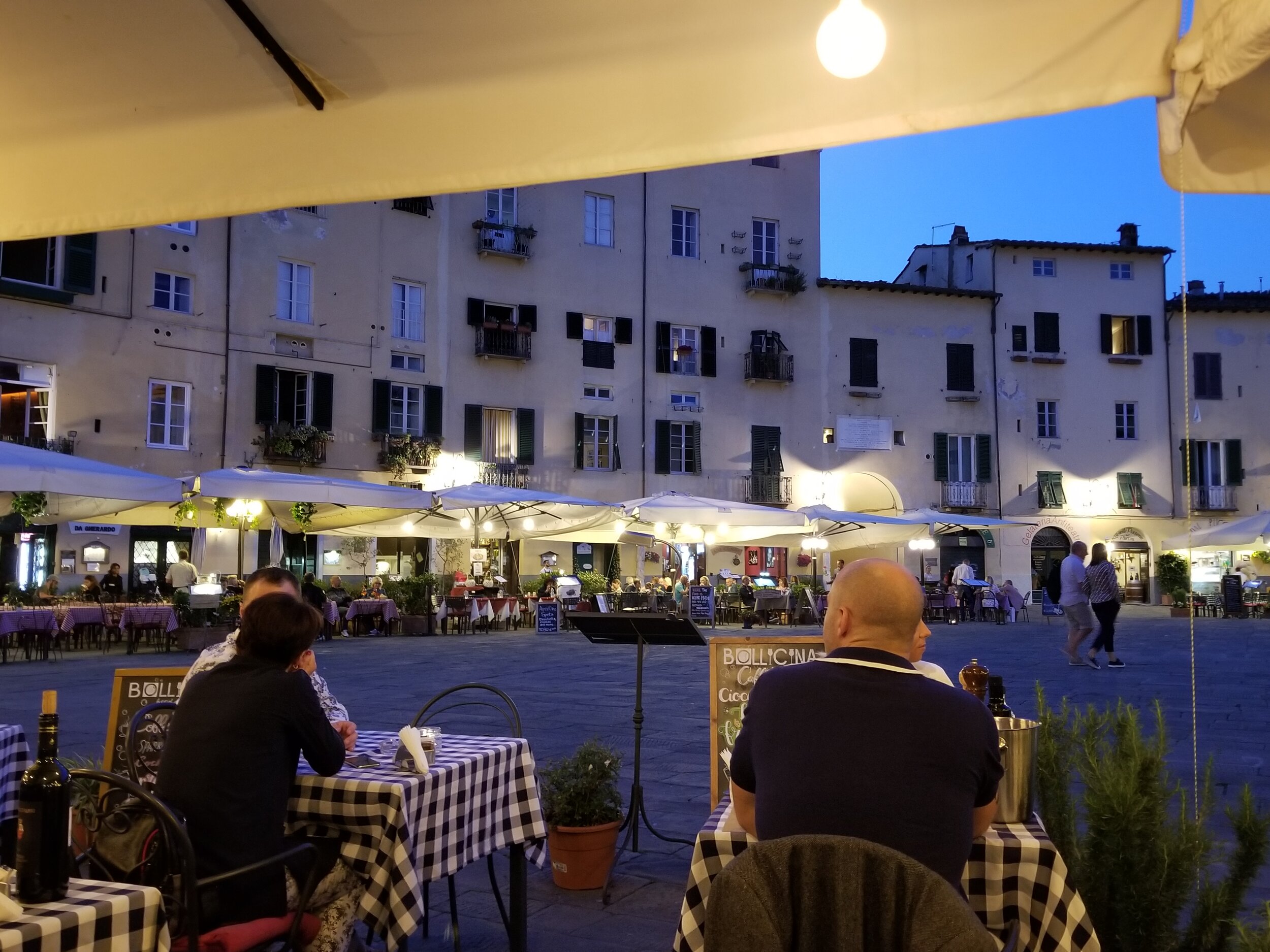
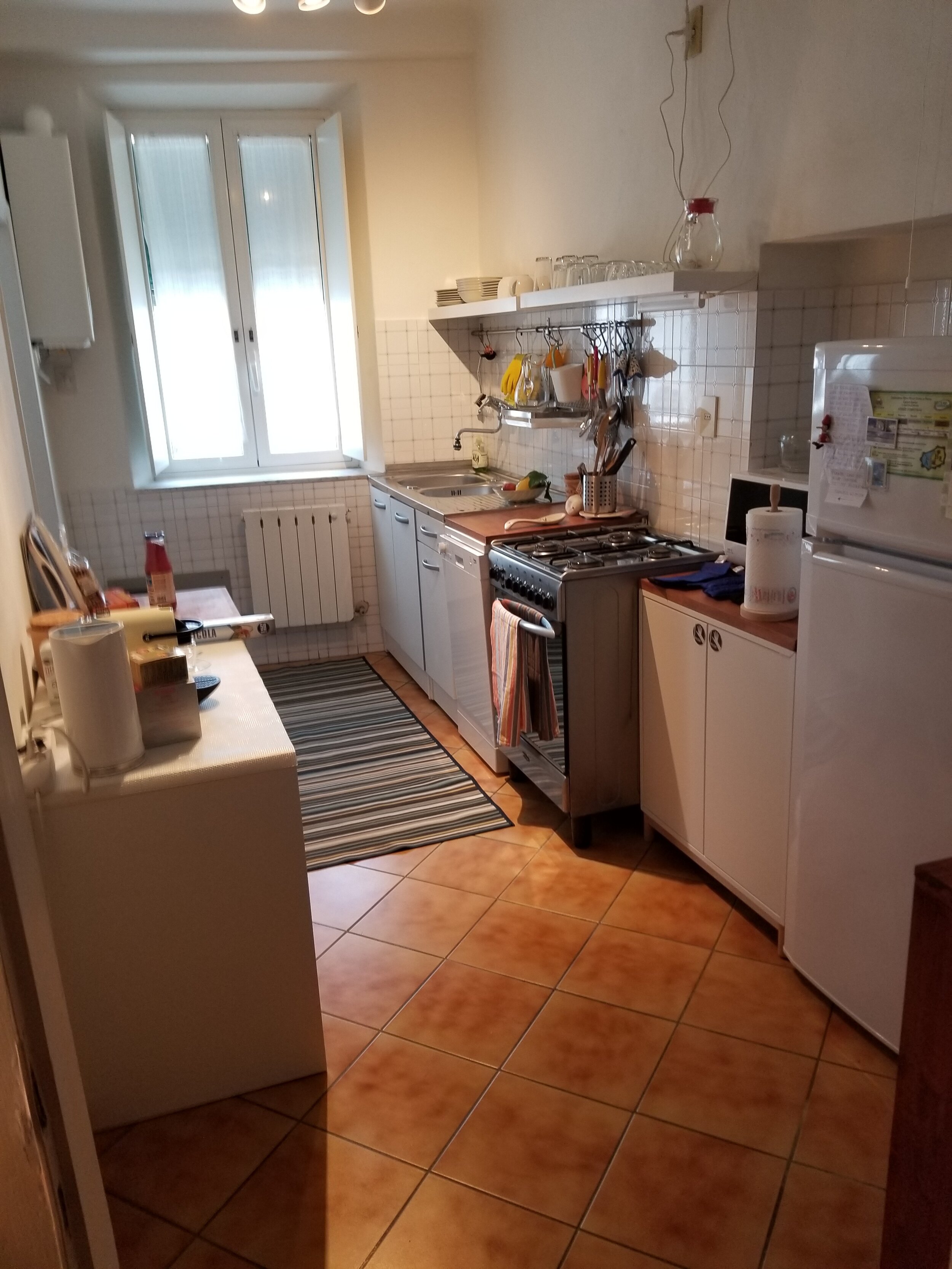
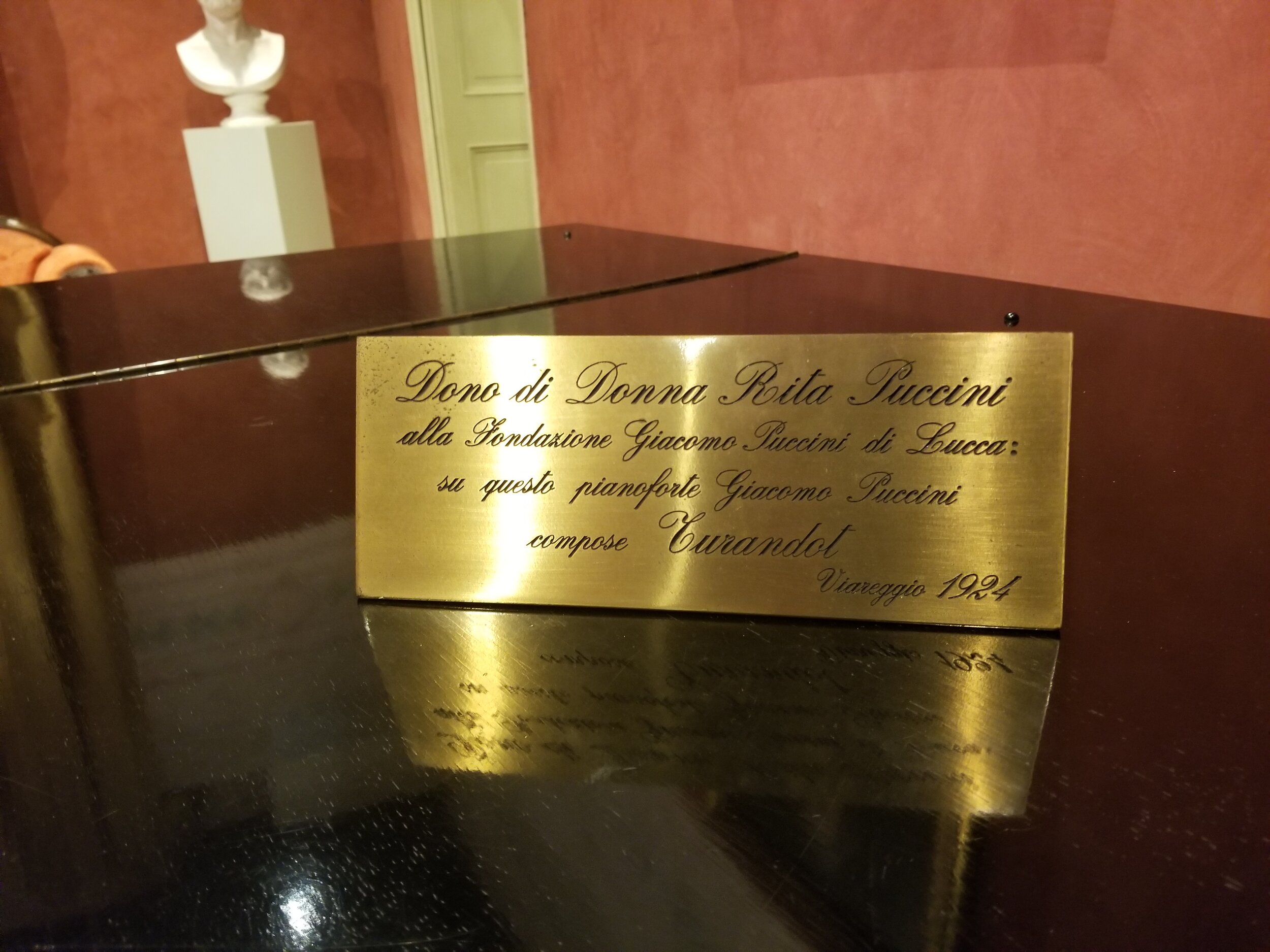
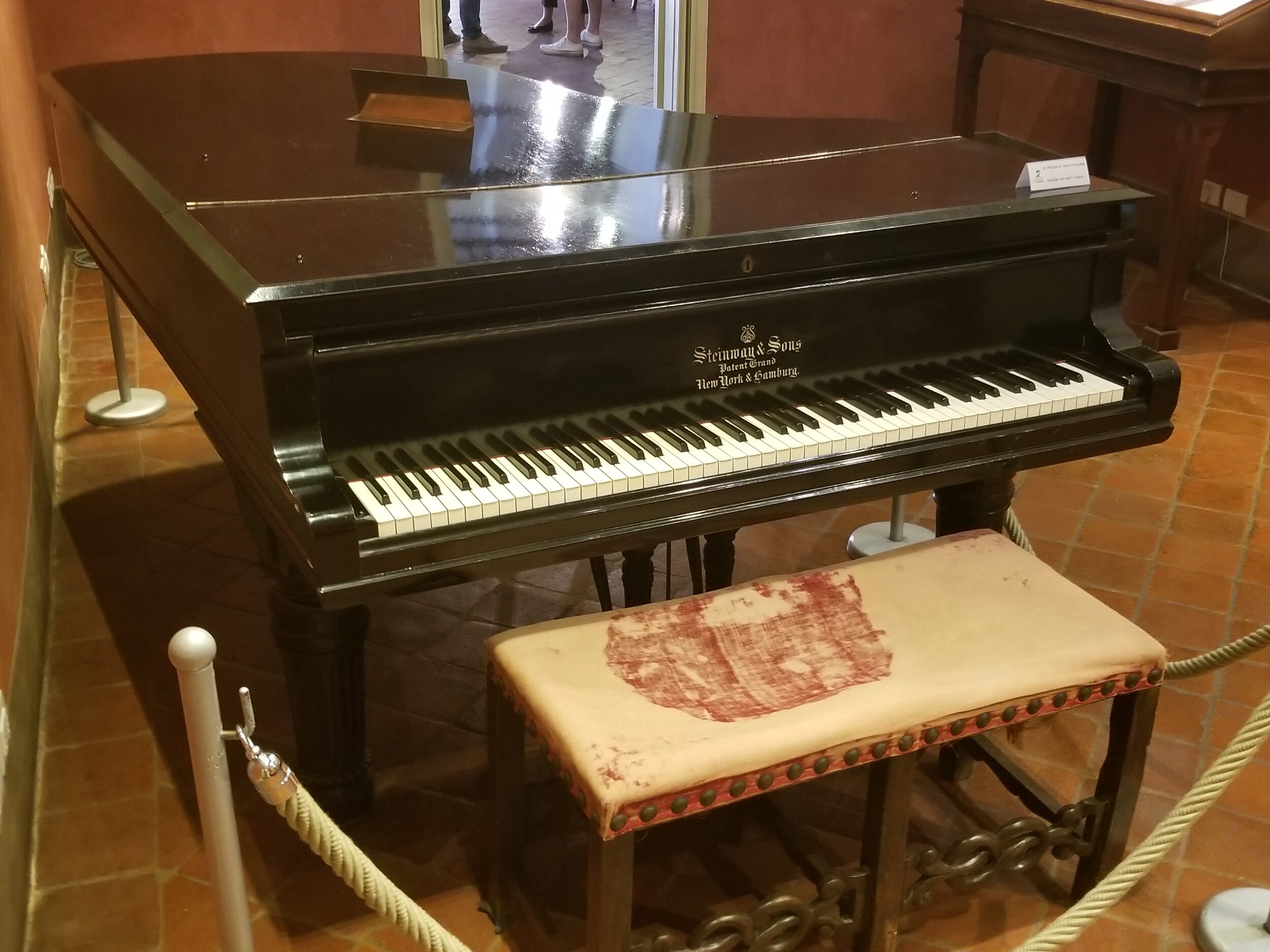
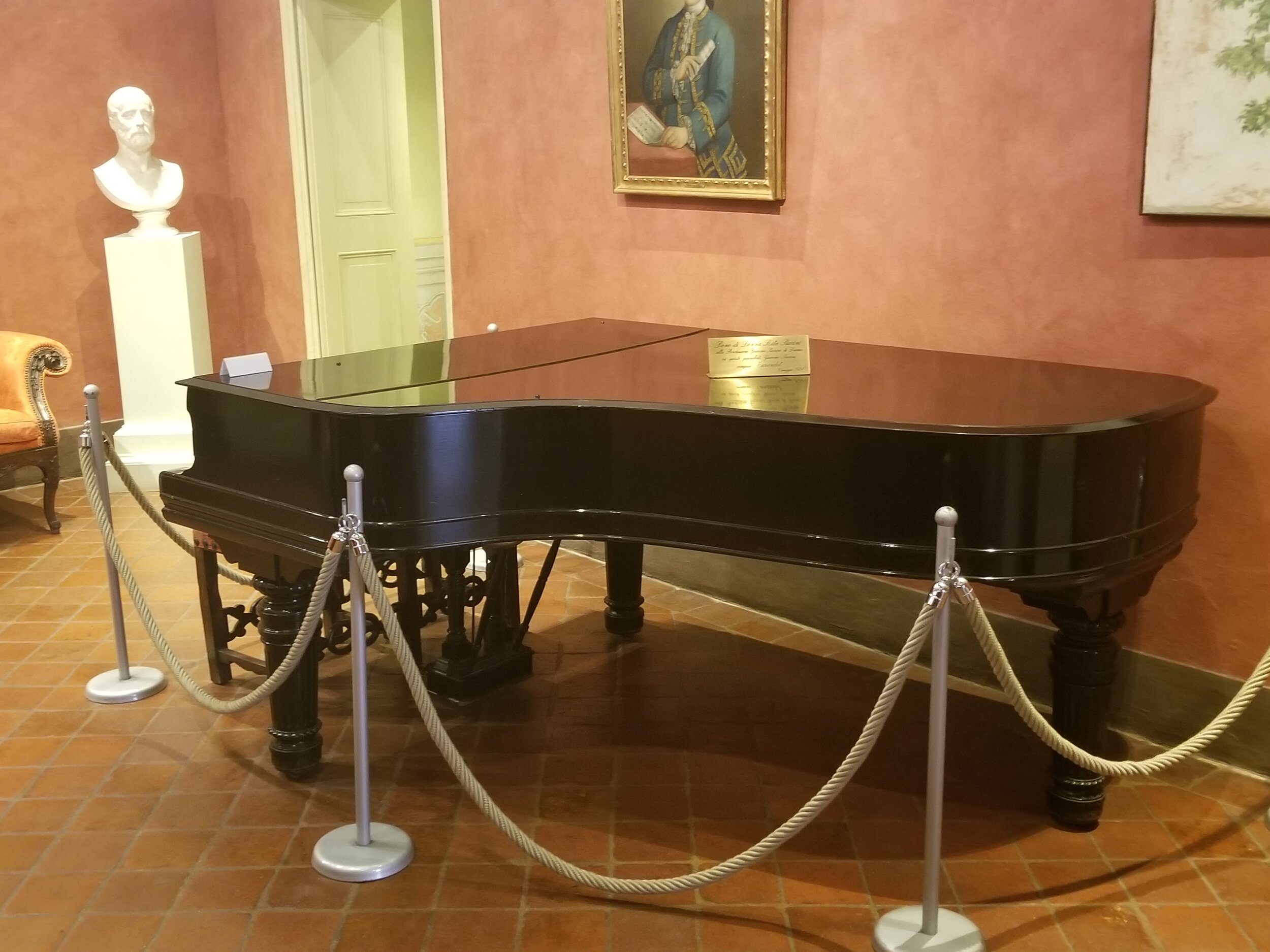

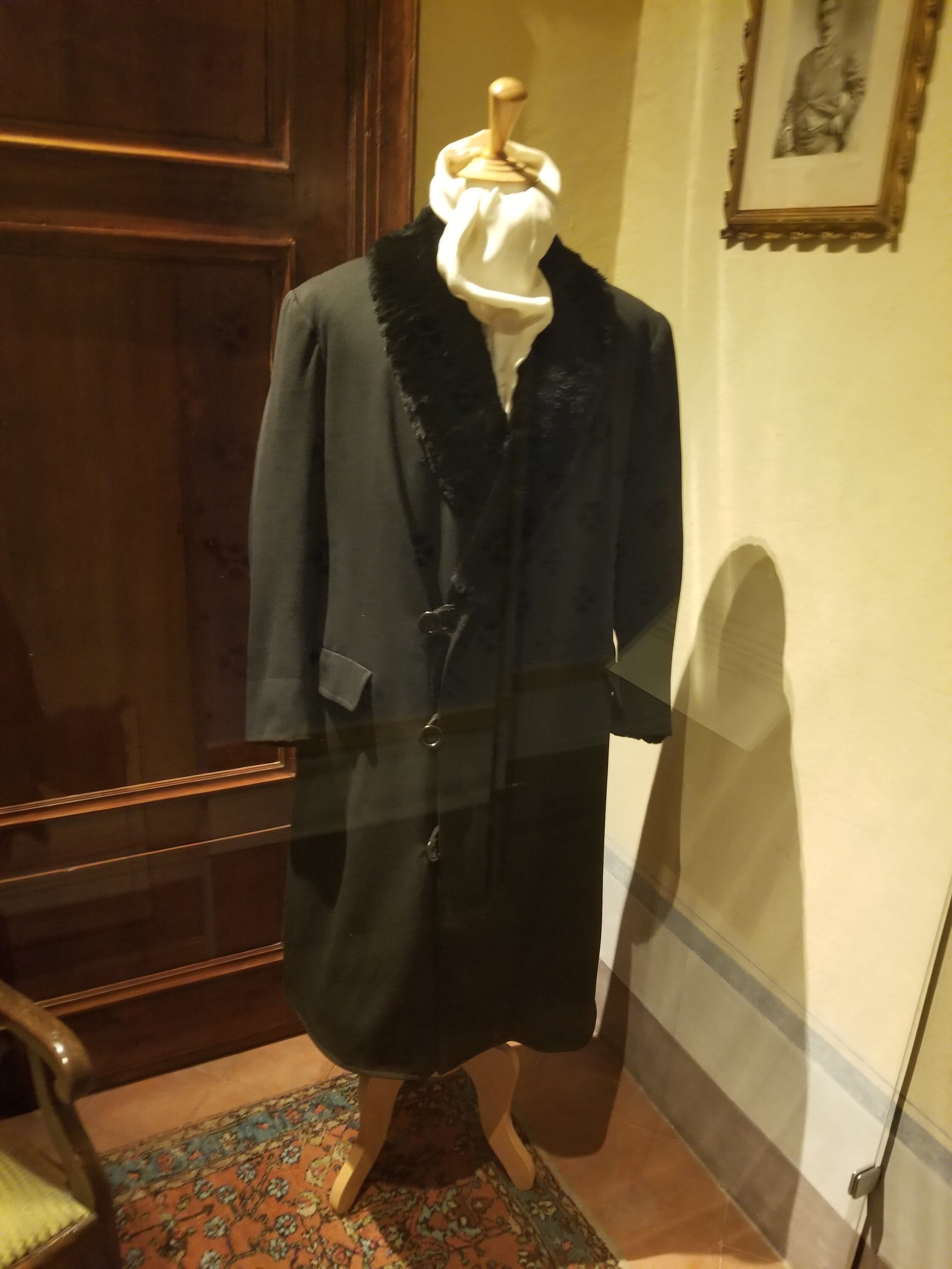
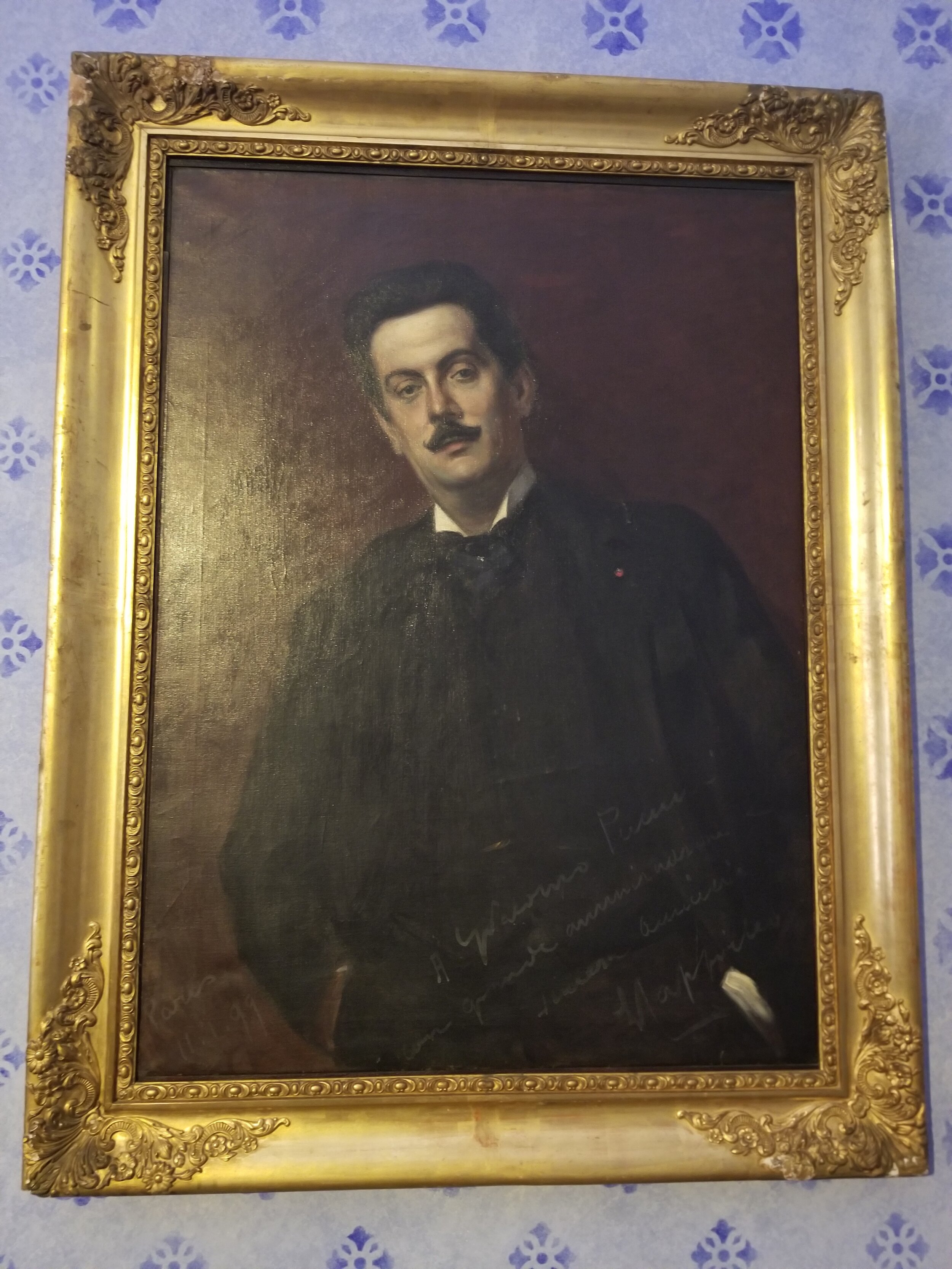

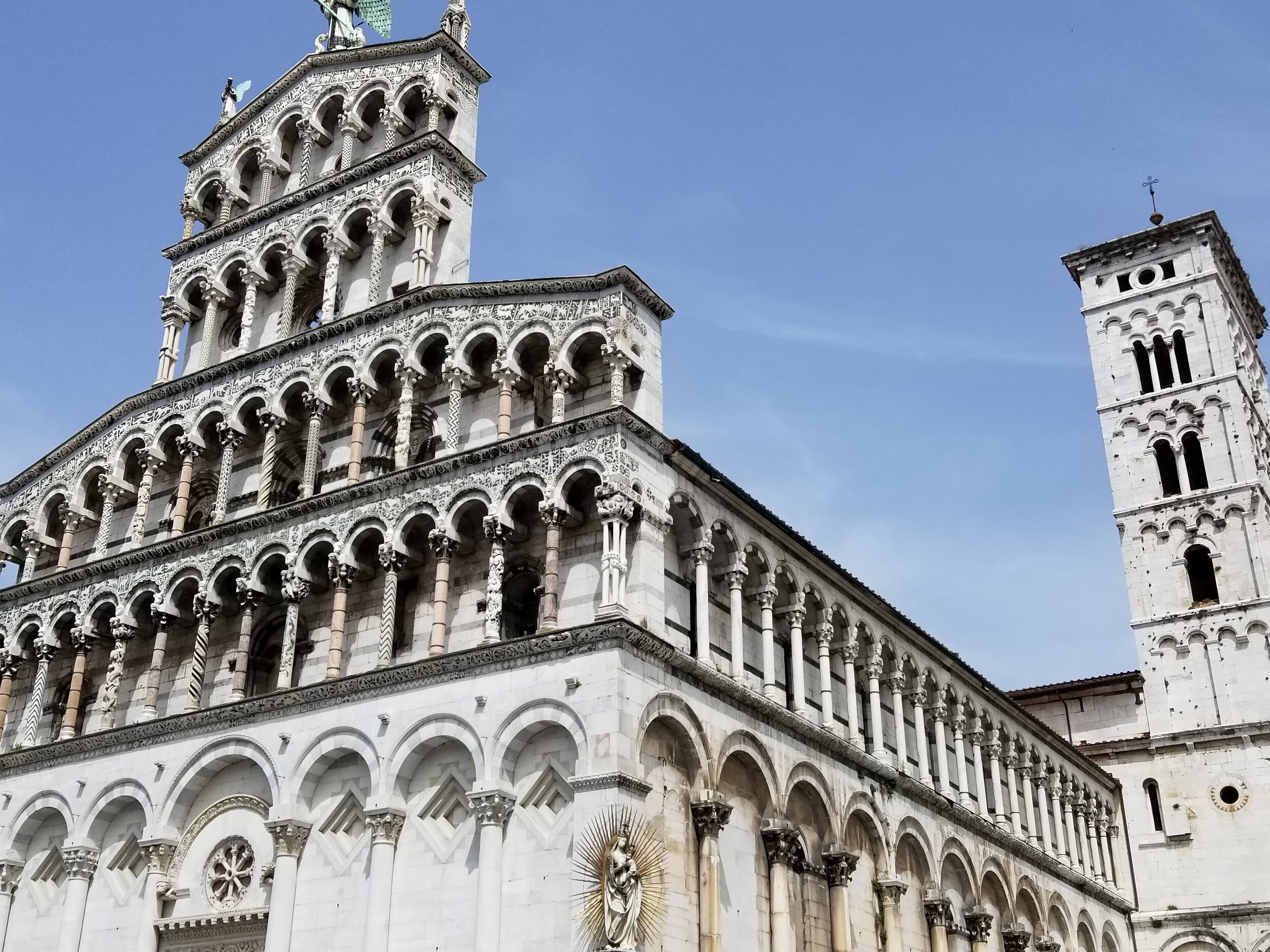
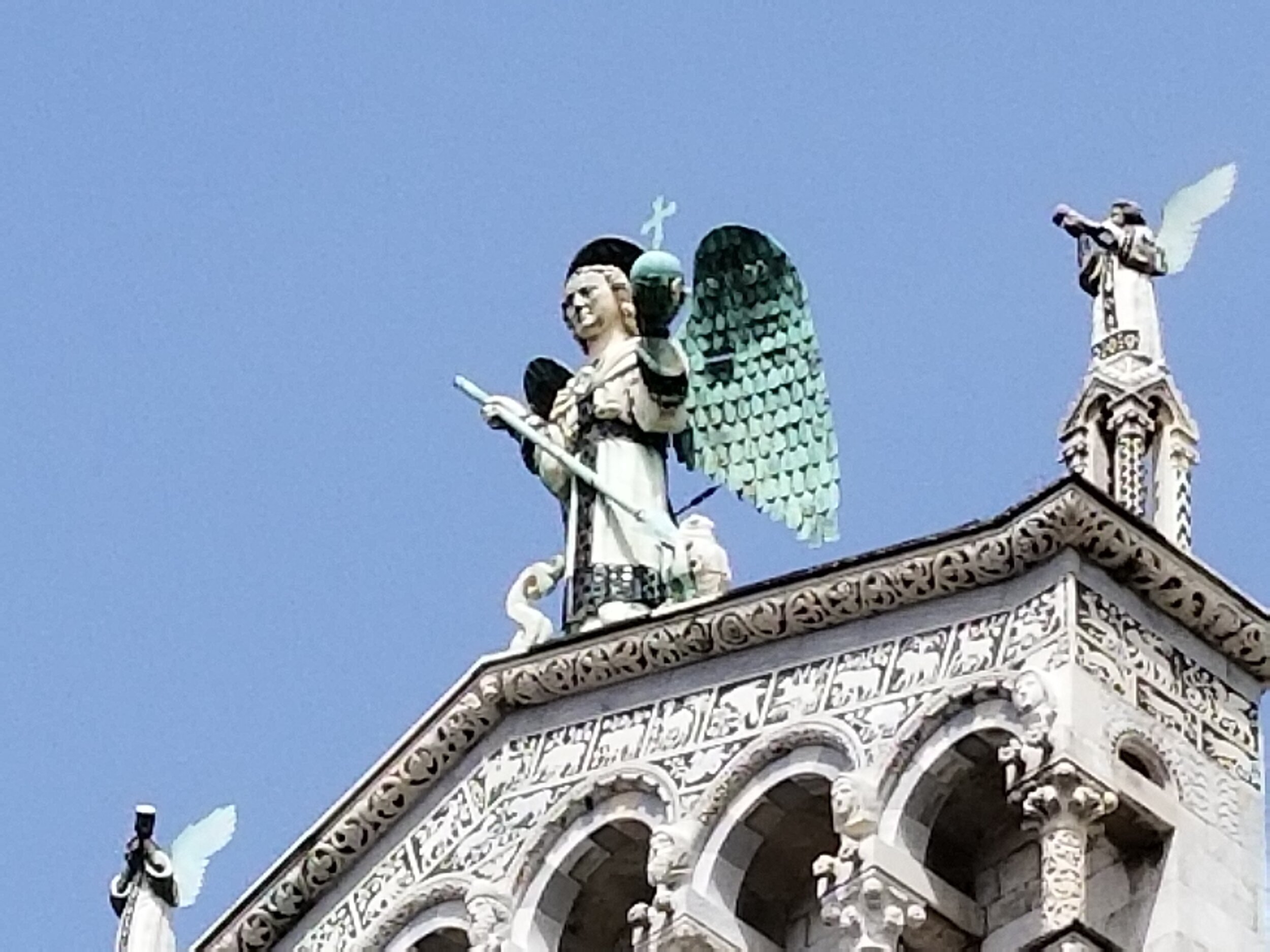
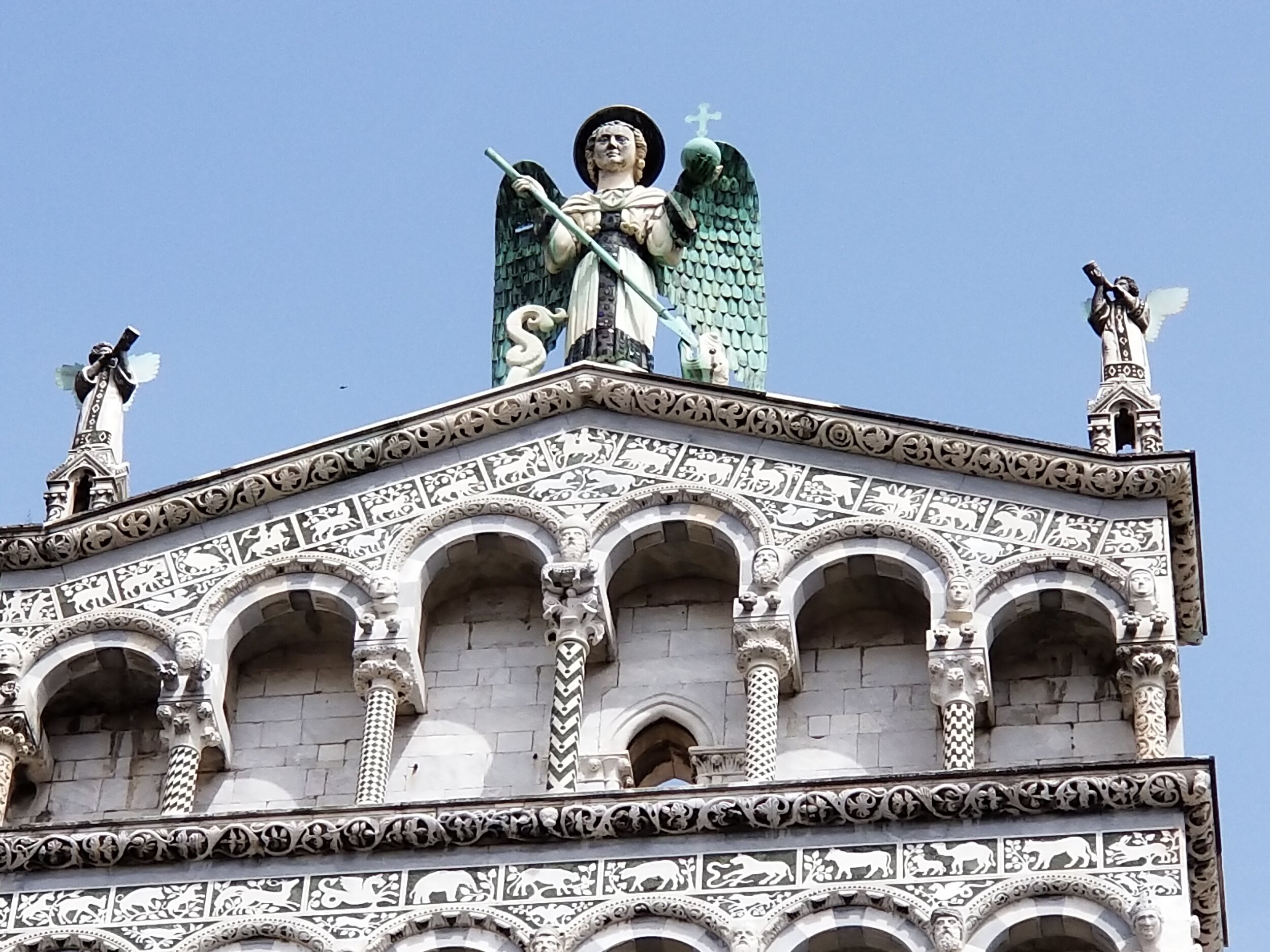
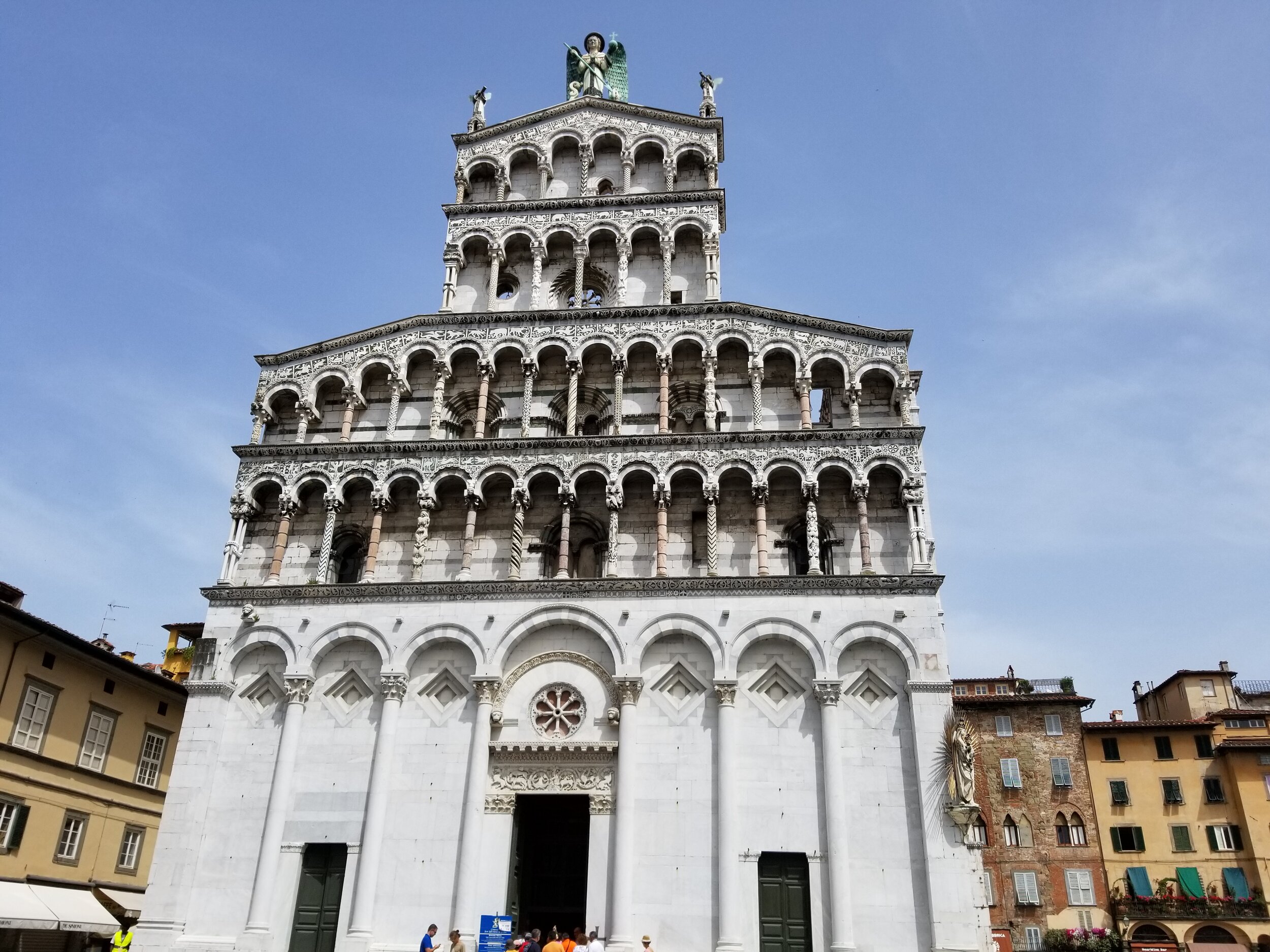
Sliced and toasted in olive oil, this is a fragrant, but beautifully mellow and savory aspect to whatever you are cooking. Minced or chopped and tossed raw into your tomato bruschetta will perk up your mouth like a trip to Naples. If you decided you want it to be very pungent, you could press it in your garlic press. On occasions when you are feeling very fancy, you might choose to use your chef’s knife to make a paste with the simple “smash and salt” method. Feeling sexy? You could take the whole head of garlic, lop its little hat off, sprinkle it with olive oil and a little sea salt, wrap it in some foil and roast it in your oven to get a beautiful, unctuous paste you can spread on your bruschetta or on your bistecca.
Dropping an unblemished, un-smashed, perfectly peeled clove of garlic into your heating olive oil and then pulling it out will impart the most beautiful hint of its perfume. By roasting it, you can change it from its playful green onion with grassy-peppered astringency to an earthy and caramelled headiness that supplies an unparalleled sweetness that can almost, and in some fun cases does, reach the dessert plate.
If you have never stirred a teaspoon or even a tablespoon of raw garlic paste into your finished pasta or seafood, macaroni, or potato salad or even just rubbed an split clove of garlic into the bottom of your big salad bowl, you are in for an explosion of delight. I am in such personal love with this formidable little allium that in many recipes, I even use a combination of rubbed, sliced, minced and paste, cooked and uncooked, added at different times to punch the little fellow up.
Whaddoyou mean, you want to use five or six cloves? Who do you think you are???
I dare you…
There is a fascinating history of garlic posted on the website
Southern Exposure Seed Exchange by Jordan Charbonneau. Her blog post, Brief History of Garlic is definitely worth the read.
Trying to release the layers of garlic from the spicy and fresh snap of its freshly peeled nature to its singular, sweet caramelization requires patience. You have to respectfully make friends and learn to work with it. Before you can do that, you must understand a little about the structure of its cloves.
As everything in life, garlic is made up of many cells and walls. So if breaking down more cell walls releases more of its perfume, understanding how to do it is paramount. You can control the strength of your garlic by the way you chop it or slice it. Think of it as you do its fragrant yet milder cousins the sweet shallot and the great vanguard of all cooking, the stalwart onion. Slicing it lengthwise will reveal long, sinewy strands, exactly like its cousins and so more of the broken cell walls. Slicing its waist dissects the strands in half, breaking through less of the cells walls, making it not as pungent as the lengthwise slice.
“Whaddoyou mean, you want to use five or six cloves? Who do you think you are???
I dare you… ”
If for some reason you have an aversion to garlic or think you don’t like it or its effect on your loved ones sensibilities, take this opportunity to make friends with it. Culinary and World History reflects the power of the onion’s chubby little cousin with the white paper jacket. Your health and your taste buds will thank you!
Years ago, my friend Liz and I were in San Francisco. We went to eat at The Stinking Rose. This is a garlic-centric restaurant with pots of raw garlic with olive oil and parsley on the table that you slathered on bread and everything else that you ordered. Totally fun, especially the garlic ice cream! I am sure we were totally protected from vampire attacks that night. But oooohhh… our stomachs reminded us of how we abused said garlic throughout the night. Did I tell you we somehow managed to eat four pots of the stuff?
Here’s photo of the condiment from the restaurant The Stinking Rose taken by writer/blogger Amy Martin for Phoenix Bites in her article THE STINKING ROSE: A GARLIC-LOVER’S MECCA. It’s a super article about the restaurant with menu photos.
Garlic is sort of the unspoken hero in many Italian dishes. People use it, but don’t talk much about it. Unless it is a dish that historically does not include the culinary allium like famous Amatriciana. If you put garlic in that and serve it to your Italian friends, they will tell you, a little down their noses, that you have not actually made Amatriciana. So before you anger anybody’s classic, Italianate sensibilities (and in case you wanted to know the real recipe) you should ask the doyen of Italian cooking, Lidia Bastianich how to make it. Here is her recipe for a classic Bucatini all' Amatriciana.
Graffiti di Puccini in Lucca
Garlic has a singular love/hate relationship with Italians. For example in Liguria, Piedmonte, Emilia-Romagna, Lazio, Campania, Umbria, La Marche, Puglia, Abruzzo and in beautiful Tuscany, it can absolutely show up as the king of the roost. While in other places, like the Veneto, Lombardia and further north like Trentino-Alto Aldige, you may not find it leading the flavor profile on your plate. Of course, there is no hard and fast rule about which regions in Italy use the most garlic. It is purely about one’s particular tastes. You may express yourself with garlic in any and many ways. It’s up to you!
Somehow, perhaps in an effort to reconnect with the homeland they left behind, Italian Americans began chowing down on garlic cloves and incorporating them more into their food than perhaps they did back home.
I am one of these Italian-American sons. I am learning to show restraint so that the beauty and complexity of the other products I cook with can shine through and not be smothered by the pure, brute strength of this little, venerable allium in the white, paper jacket.
Click La Divina for some blog reading mood music.
Grazie, MediciTV click here to subscribe.
In closing, I offer you a garlicky reverie from the land of Puccini. Click on the above video of Maria Callas and let her transport you with her voice and Puccini’s music…
Once in the beautiful, medieval walled city of Lucca, I was on my way to the nightly Puccini concert and thought I’d grab a light dinner. I ended up ordering a little side of garlic because my waiter suggested it. He said it was just a condimento, just a simple condiment, so there was no charge.
Caffe Del Duomo, Lucca, Italy
What came out was no less than otherworldly. Served as an accompaniment, this incredible gift from the campagna came jauntily to my table this particular afternoon in a colorful glass decanter. It splashed with the most lemon-floral, viscous, Tuscan olive oil slightly warmed from the summer afternoon. It was served with the most imperfectly playful and thick cut wedge of flame-toasted bread. I didn’t get a picture of it because, well, I ate it all with the bread basket before the meal arrived. Too embarrassed to ask for more, I bravely soldiered on, straight to the prosciutto bruschetta con crescione that had arrived.
“Is this Heaven,” I asked myself?
“Si, figlio mio,” whispered il Maestro’s voice on the breeze of this smiling, summer afternoon, “Benvenuti nella mia bella Italia... “
